Binance vs KuCoin Review 2024: Which Exchange is the Winner?
On March 26th 2024, KuCoin and two of its founders were criminally charged with Bank Secrecy Act and Unlicensed Money Transmission offences. We do not recommend using KuCoin at this time.
Come one, come all!
Welcome to the Coin Bureau. Find your seat and settle in for another edition of our head-to-head exchange comparison series, where we pit the biggest and best cryptocurrency exchanges against one another to help our readers figure out which is the proper exchange for them.
In the left corner in the black and gold trunks, we have the reigning champion Binance, who has held the championship for years as the number one exchange in the entire crypto industry.
In the right corner, sporting the green and white trunks, we have the challenger KuCoin, battling increased user adoption and not going down without a fight.
These two exchanges are absolute titans in the industry, highly respected, reputable, and packed full of features and benefits to suit any crypto enthusiast. So which exchange is worthy of your attention and is best for you? Read on to find out.
Disclaimer: I personally have accounts at Binance and KuCoin and hold BNB token as part of my portfolio.
If you are in a search for the ultimate exchange to suit your needs, consider checking out our other exchange articles to make sure you find the one that is perfect for you:
We will look at each exchange individually later in this article, but first, we will cover an overview of our findings when comparing the two head-to-head.
If you want to see how Binance and KuCoin stacks up against other crypto exchanges, feel free to check out our comprehensive Top Exchanges article where we break down the best exchanges in different categories to help you find the right one to fit your needs.
Note: Users located in the US and UK are not supported.
Binance vs KuCoin: Currencies and Products Offered
Both Binance and KuCoin are excellent options for traders who want to take advantage of derivatives, spot, and margin trading. Some cryptocurrency exchanges aim to be as simple as possible for crypto users who are not interested in frequent trading nor looking to actively trade different markets, so they don’t bother featuring a robust trading platform. Many exchanges feature a simple, no-frills interface where users can purchase and hold their crypto and access basic features such as staking.
Other exchanges pride themselves on providing a full-featured bells and whistles type of trading platform perfect for traders of any skill from beginner to pro. Both Binance and KuCoin fall under this category.
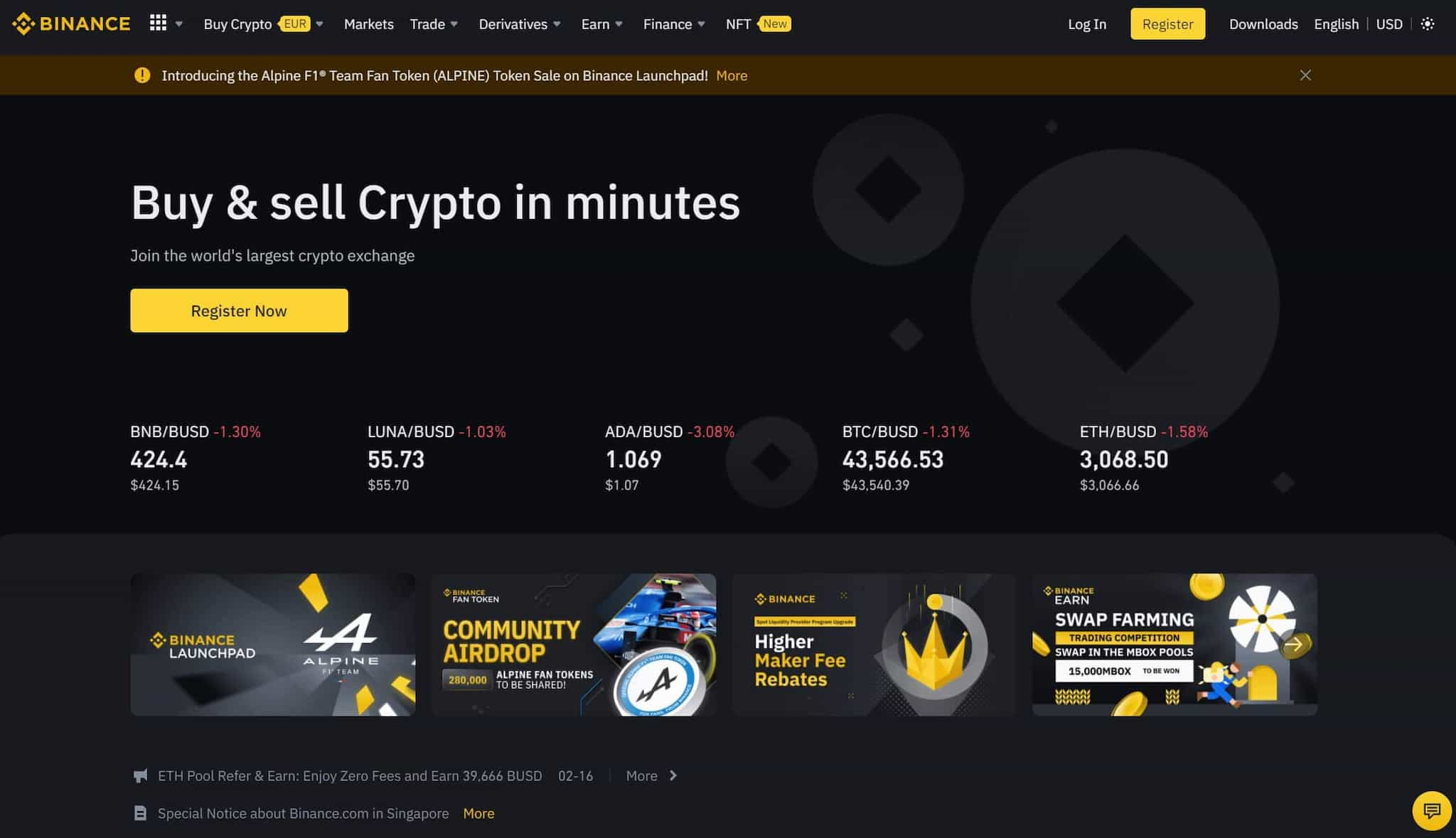
That is not to say that these platforms only cater to active traders as they are both fantastic options for users who are simply looking for an easy place to purchase crypto, as these two exchanges have a massive catalogue of coin support. Both of these exchanges are suitable for beginners looking to purchase and hodl, or for active traders who can navigate to the trading screen where they will find all the necessary technical analysis tools, functions and features that traders need for active trading.
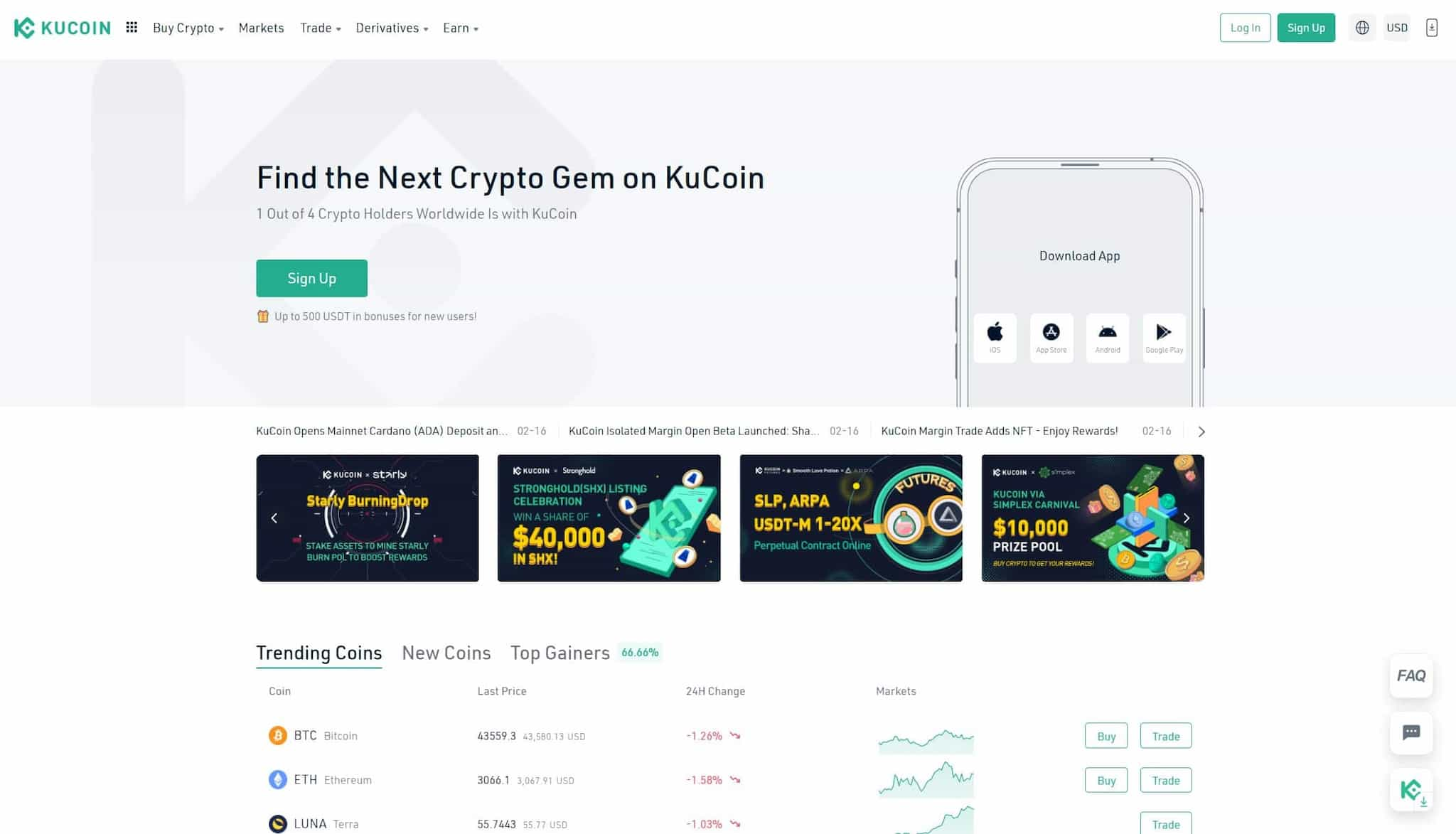
For anyone looking to improve their technical analysis skills and improve their trading, be sure to check out Guy’s three-part series on how to perform technical analysis.
KuCoin offers up to 100x leverage, while Binance recently announced that they would be reducing leverage from 125x and 100x down to 50x for many of their products, you can find the tier limits on Binance's Tier Page.
Binance and KuCoin similarly offer Binance Lending and KuCoin Lending which allows their users the ability to lend and borrow funds for trading. Borrowing provides traders with the ability to use funds put up by a third party to conduct their trading activity. The other side of this coin means that users on both platforms can lend out their crypto holdings to those looking to borrow for some nice interest rate returns.
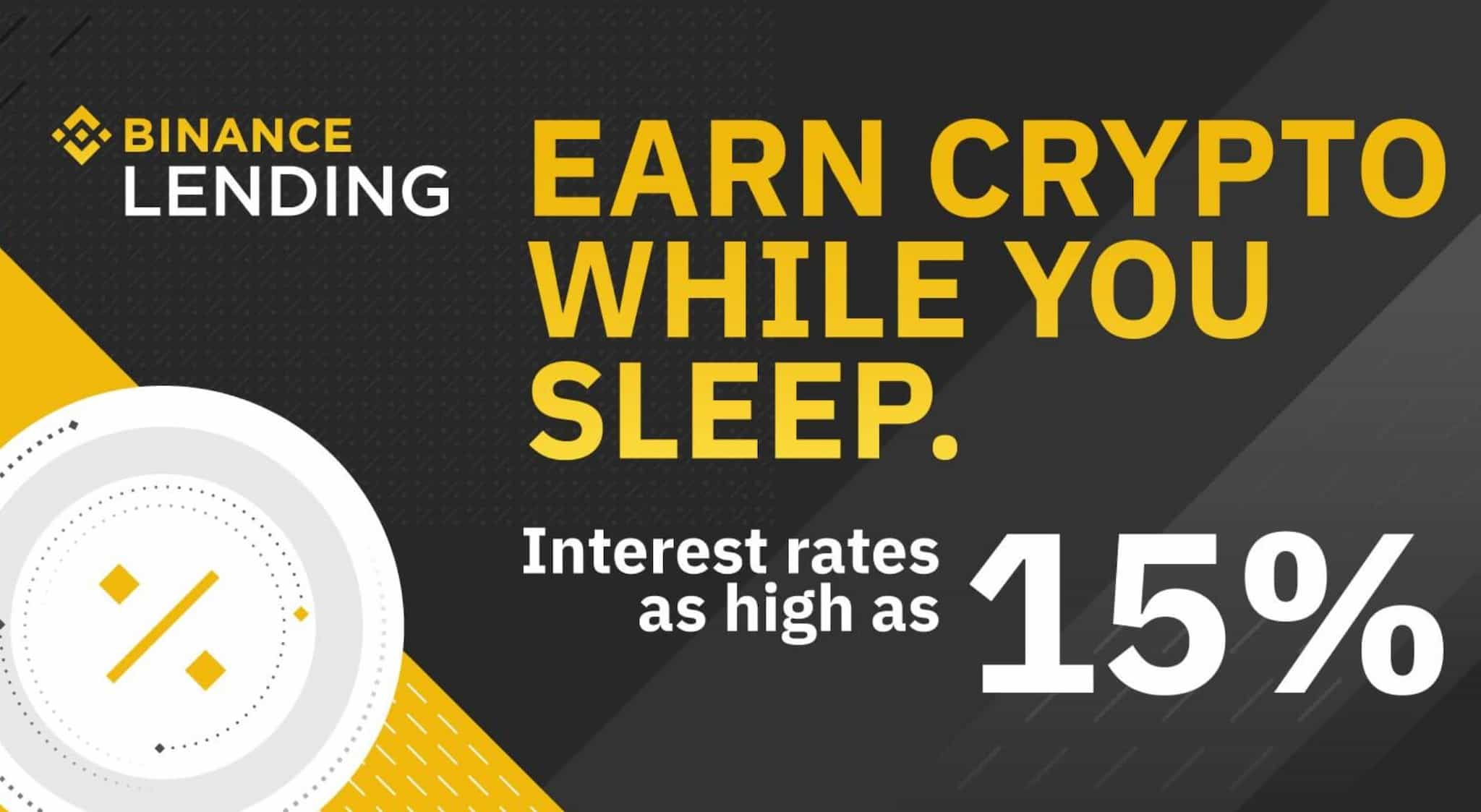
While it sounds like both platforms are identical, where they start to differ is in a few key features. Binance has a very clean, sleek looking and user-friendly NFT platform, which has seen some high trading activity as NFTs continue to skyrocket in popularity, while KuCoin offers automated trading bots accessible directly on the platform.
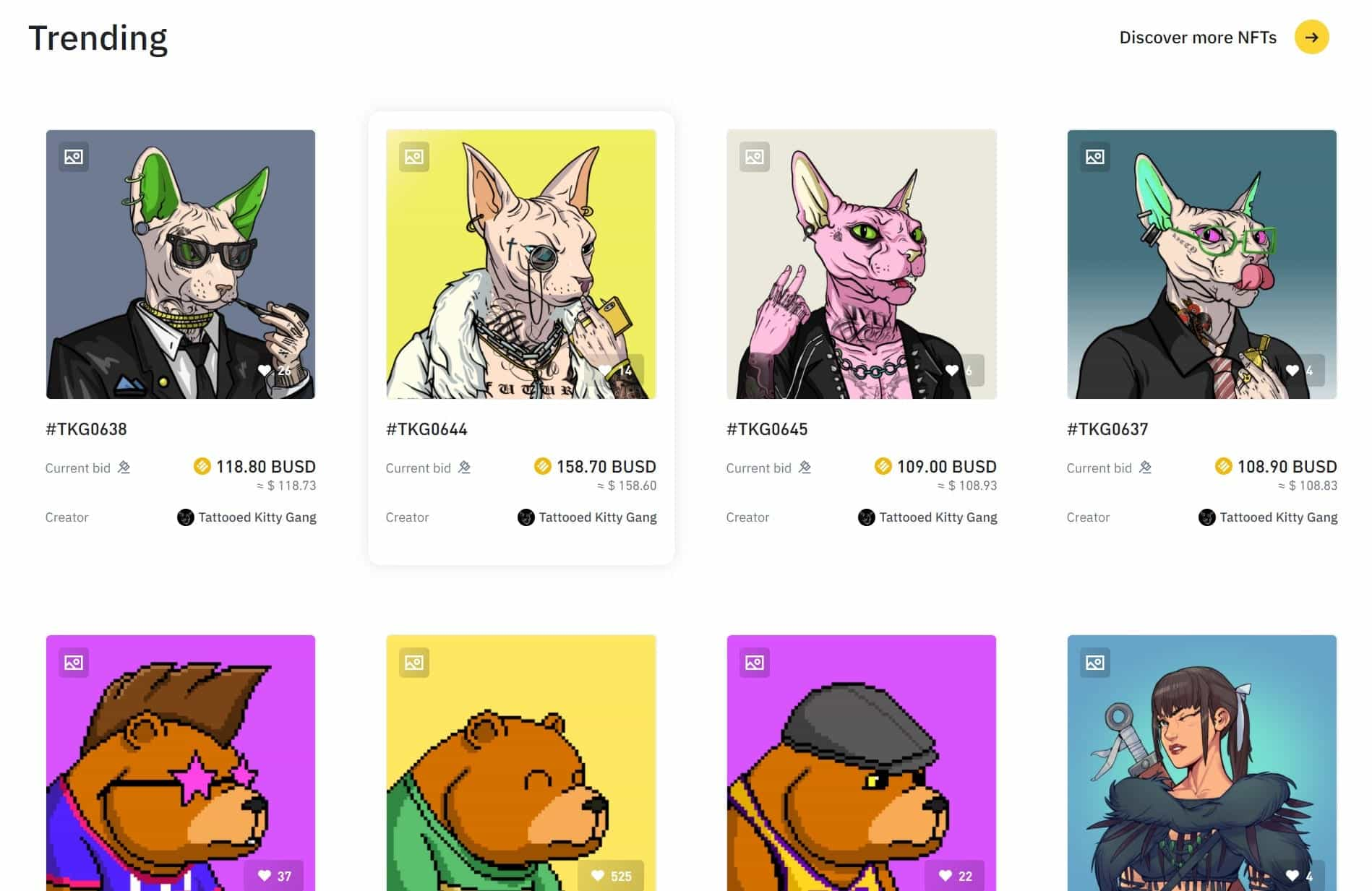
Binance also has a crypto debit card which allows users to spend their crypto anywhere that accepts Visa and earn a nice cashback reward paid out in BNB for every purchase. This makes Binance the better choice for anyone who wants crypto to be used in their day-to-day routine, especially now that more people are being paid their salary in crypto.
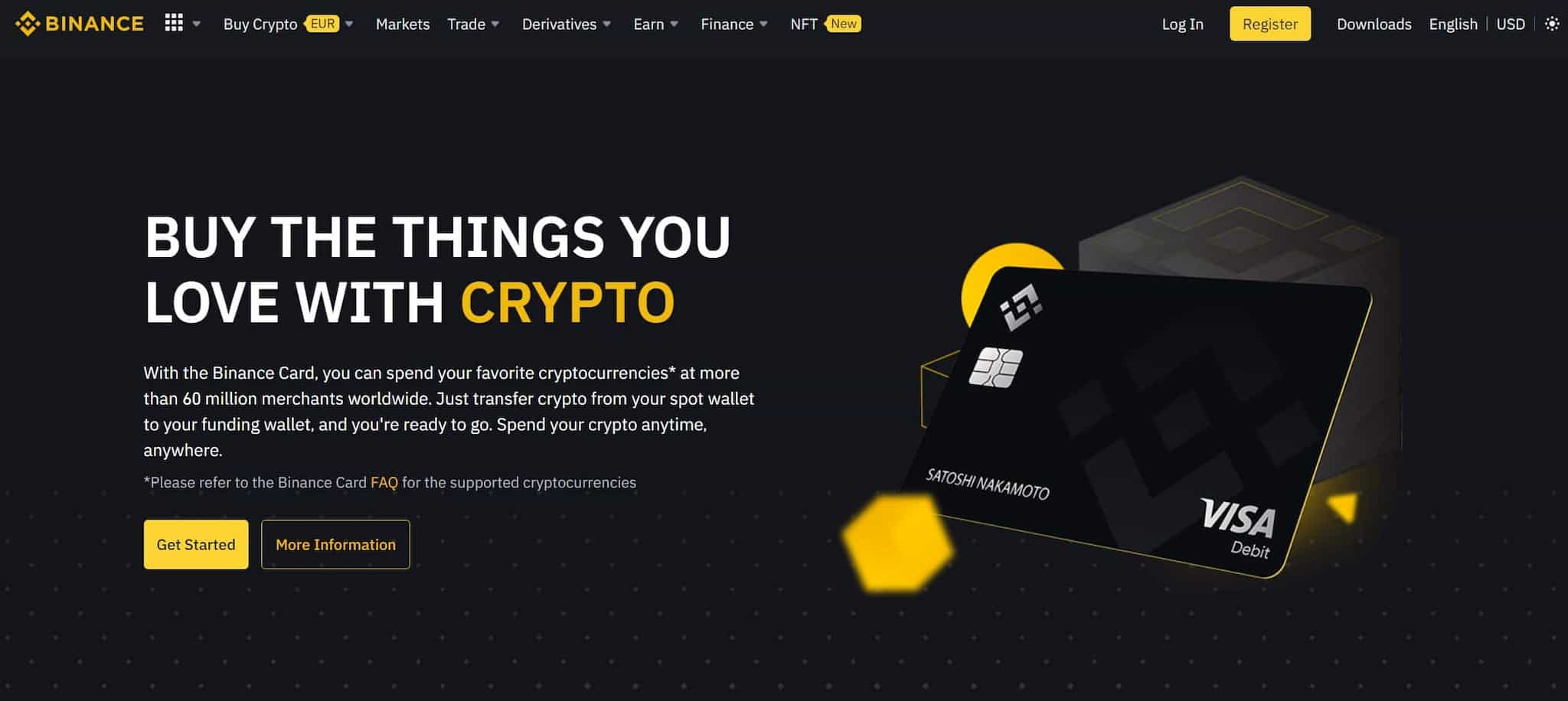
Binance is the ideal exchange to have your crypto salary paid into as you can sell to cash and withdraw to a bank account or spend it on the Binance card. A huge drawback for KuCoin is there is no method to withdraw fiat to a bank account. Not having a fiat offramp is one of the most significant criticisms against KuCoin.
One thing that both KuCoin and Binance do well is they have “gamified” trading. They both run frequent trading contests to get traders involved and offer some fantastic prizes and giveaways for those who complete trading activities and participate in contests. So for anyone who enjoys a “Vegas” style type of trading platform, both platforms have plenty of prizes up for grabs.
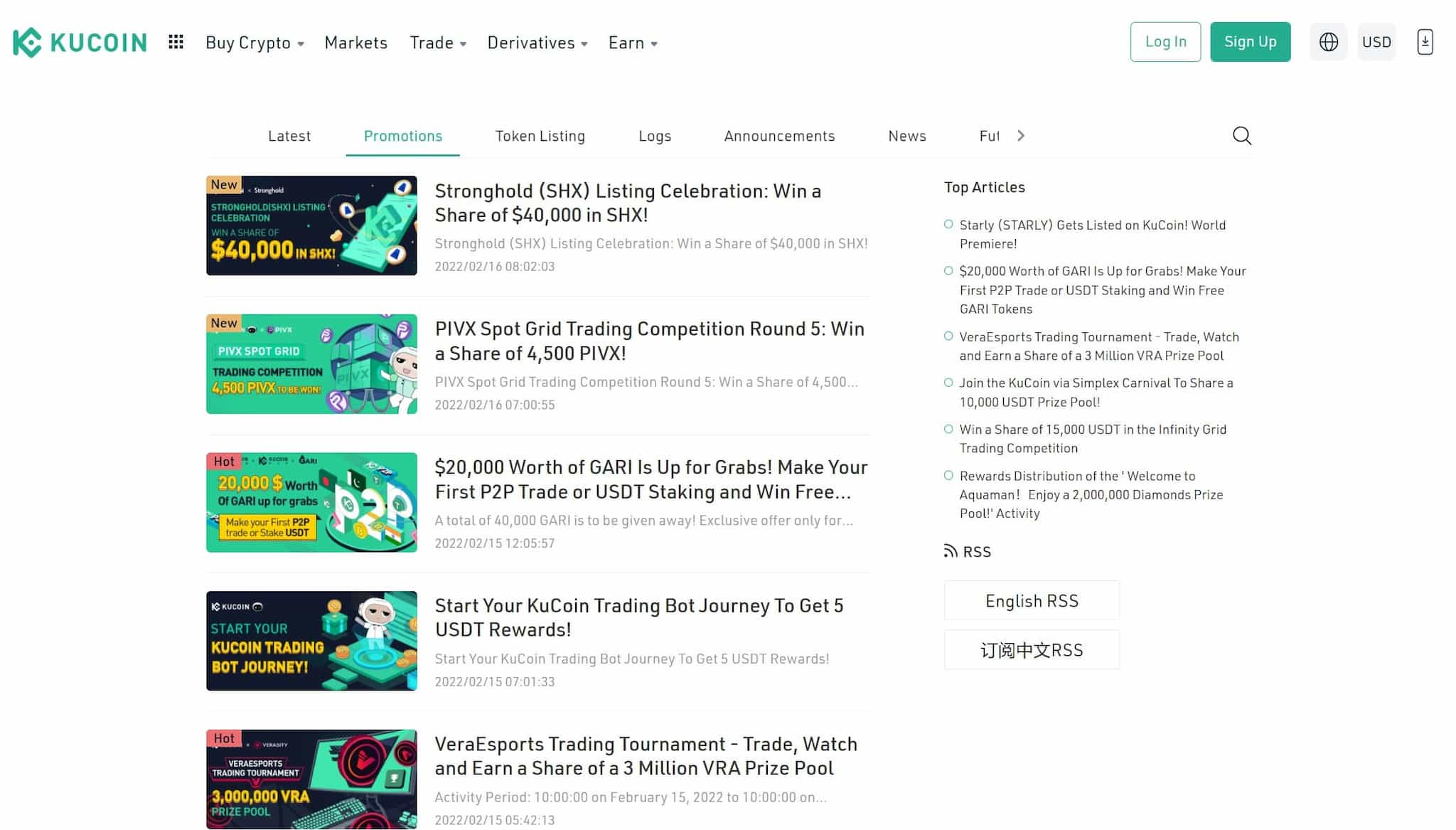
While Binance has some awesome trading prizes and giveaways, I would have to give the edge to KuCoin for the fun-seeking gambling style trader as they offer something called KuCoin Win and KuCoin Brawl. KuCoin Win is like a lottery-style platform where users can win prizes. KuCoin Brawl allows users to wager USDT to simply bet other traders if they think Bitcoin’s price is going up or down.
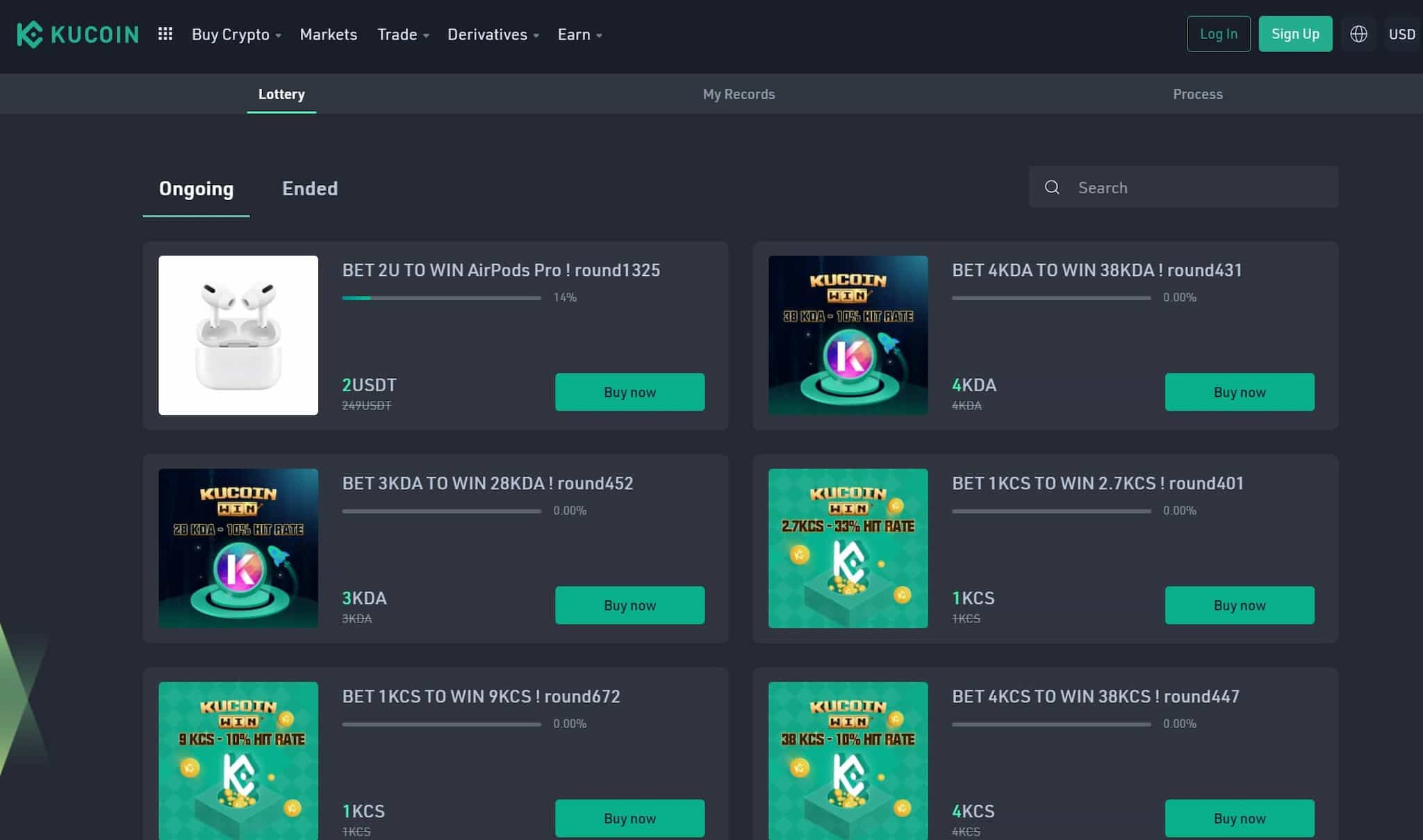
Binance vs KuCoin: User Friendliness
Both platforms have very intuitive and well laid out navigation areas. They are both packed full of features, menus, and different sections on the site. Both have supported mobile apps that also work quite well. Of course, mobile apps are best for more simple tasks. I probably wouldn’t want to participate in day trading or trading contests on a small screen or play around in more advanced areas.
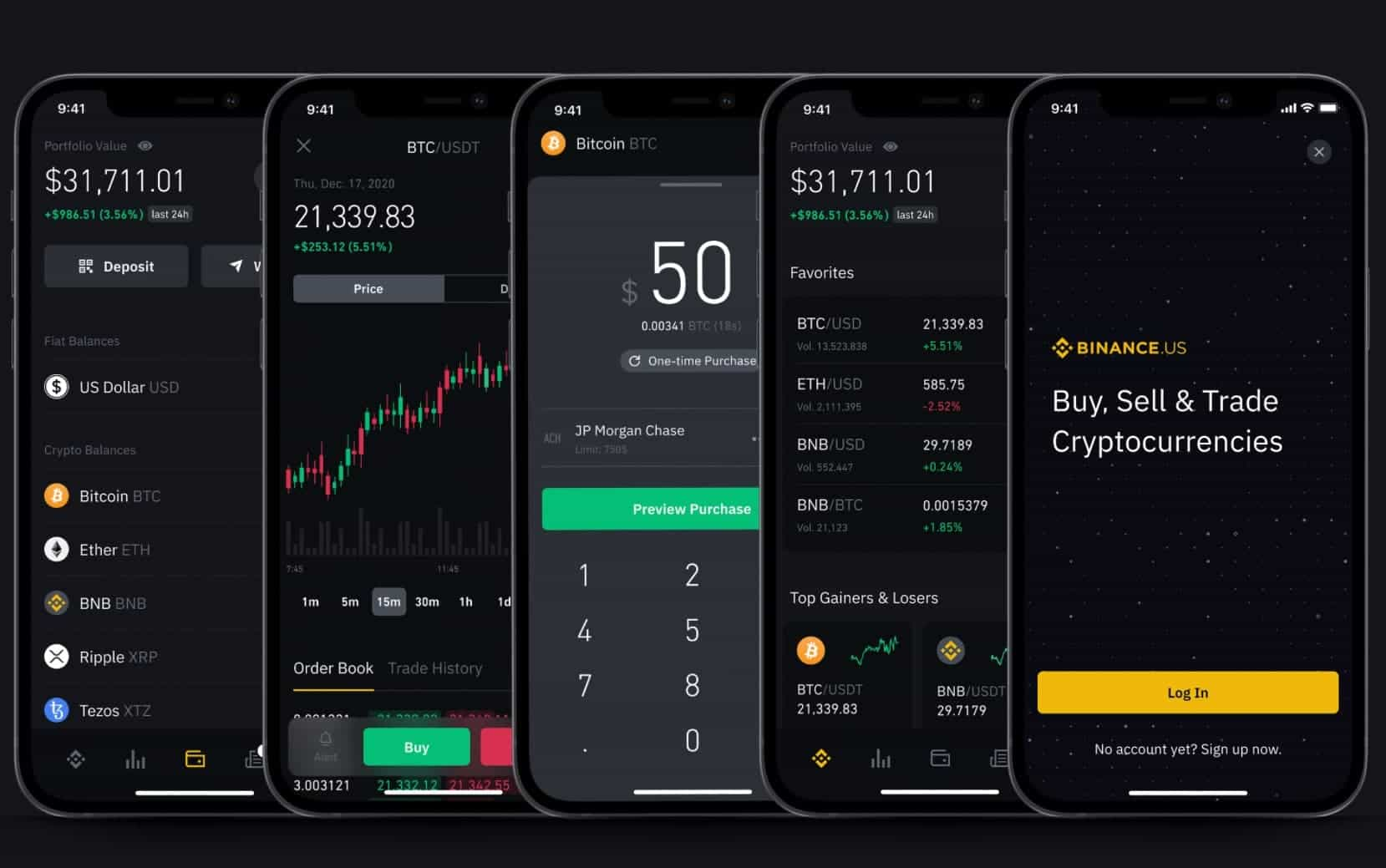
As far as the platforms themselves, I certainly would not class either Binance or KuCoin as being overly beginner-friendly, nor were they intended to be. On the contrary, both platforms are seriously packed full of features. They offer more advanced options and products than most other exchanges.
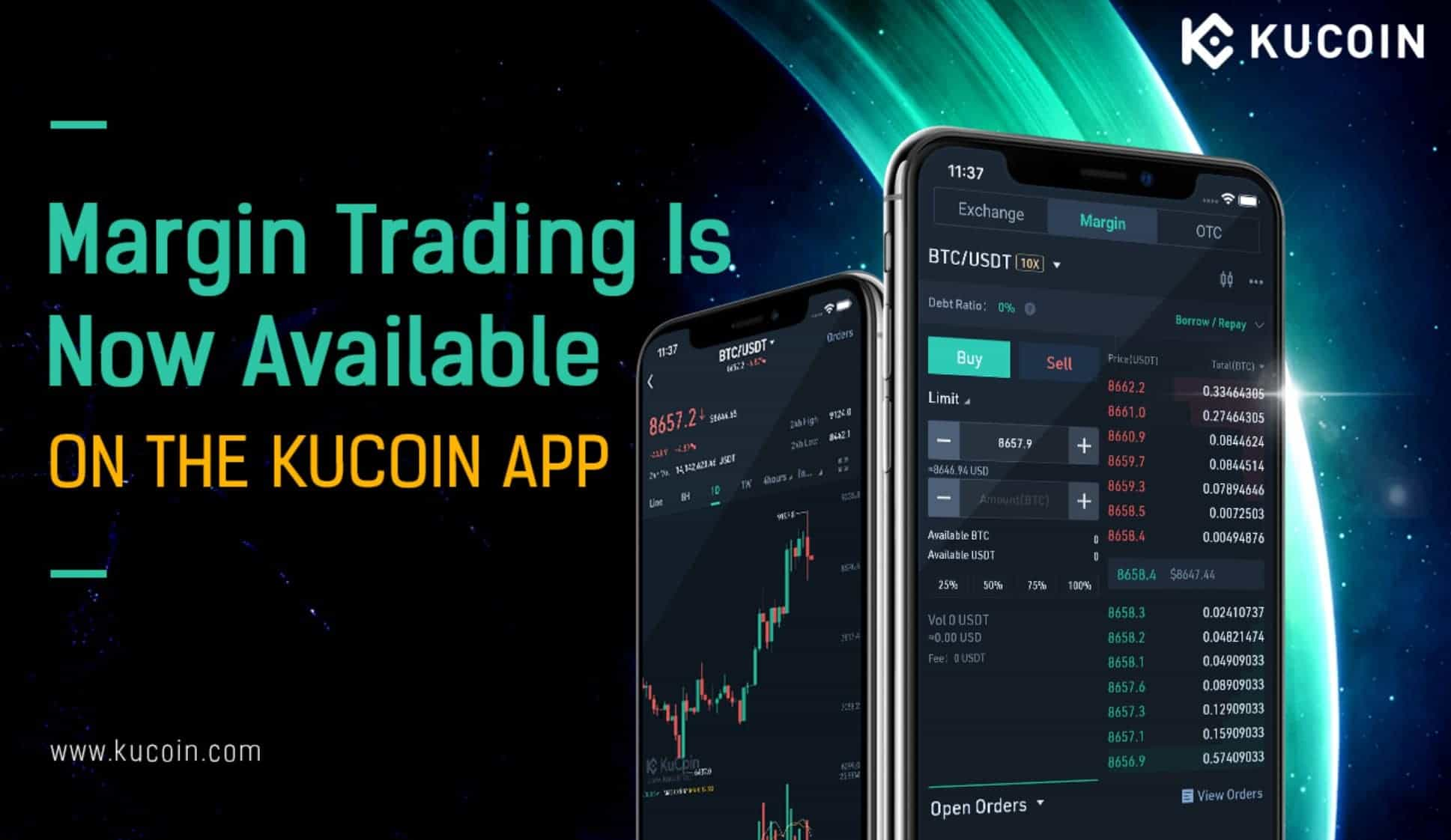
This can be seen as a good or bad thing as this means they have something for every type of crypto enthusiast, whether an active trader, staker, looking to access Binance Lending or KuCoin Lending, borrowing, spending, hodling etc. Binance especially prides itself as a one-stop-shop offering everything under the sun, and they do that very well.
The downside of this is for new crypto users dipping their toes in the for the first time, these platforms can be really overwhelming! I've been using Binance and KuCoin for years and still find myself getting lost in the depths of Binance, struggling to figure out how to search transaction history and clicking around the Earn section like it's my first time a thousand times later.
With that being said, though, platform navigation isn't rocket science and users will quickly get the hang of it. Though if I were trying to introduce my grandmother to crypto (which I have done) or someone else who isn't very computer literate and wouldn't be interested in active trading, I would likely direct them towards much easier and more simplistic platforms to buy and hold crypto such as OkCoin. Feel free to check out our OkCoin review.
Both platforms have an excellent trading screen that is as simple or advanced as traders need it to be. In addition, the Spot trading screens for both platforms are a breeze once you get used to them.
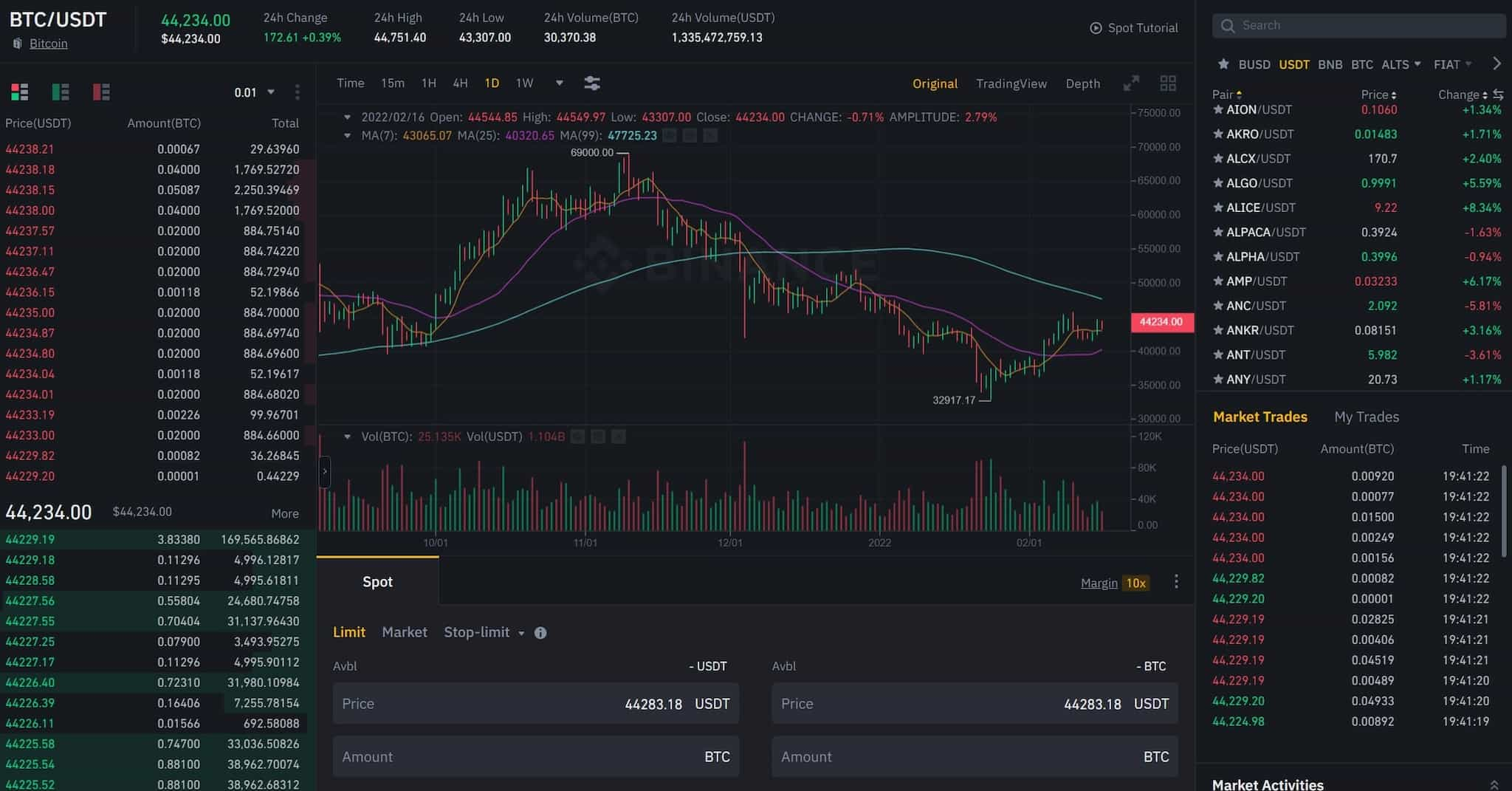
Both platforms have a “Classic” (for Binance) and a “Lite” (for KuCoin) trading screen for simple trading, and an “Advanced” (for Binance) and a “Pro” (for KuCoin) trading screen for advanced trading. The Advanced and Pro trading screens feature more advanced tools, insights, analytics and access to leveraged tokens and futures markets for the traders who wish to use them.
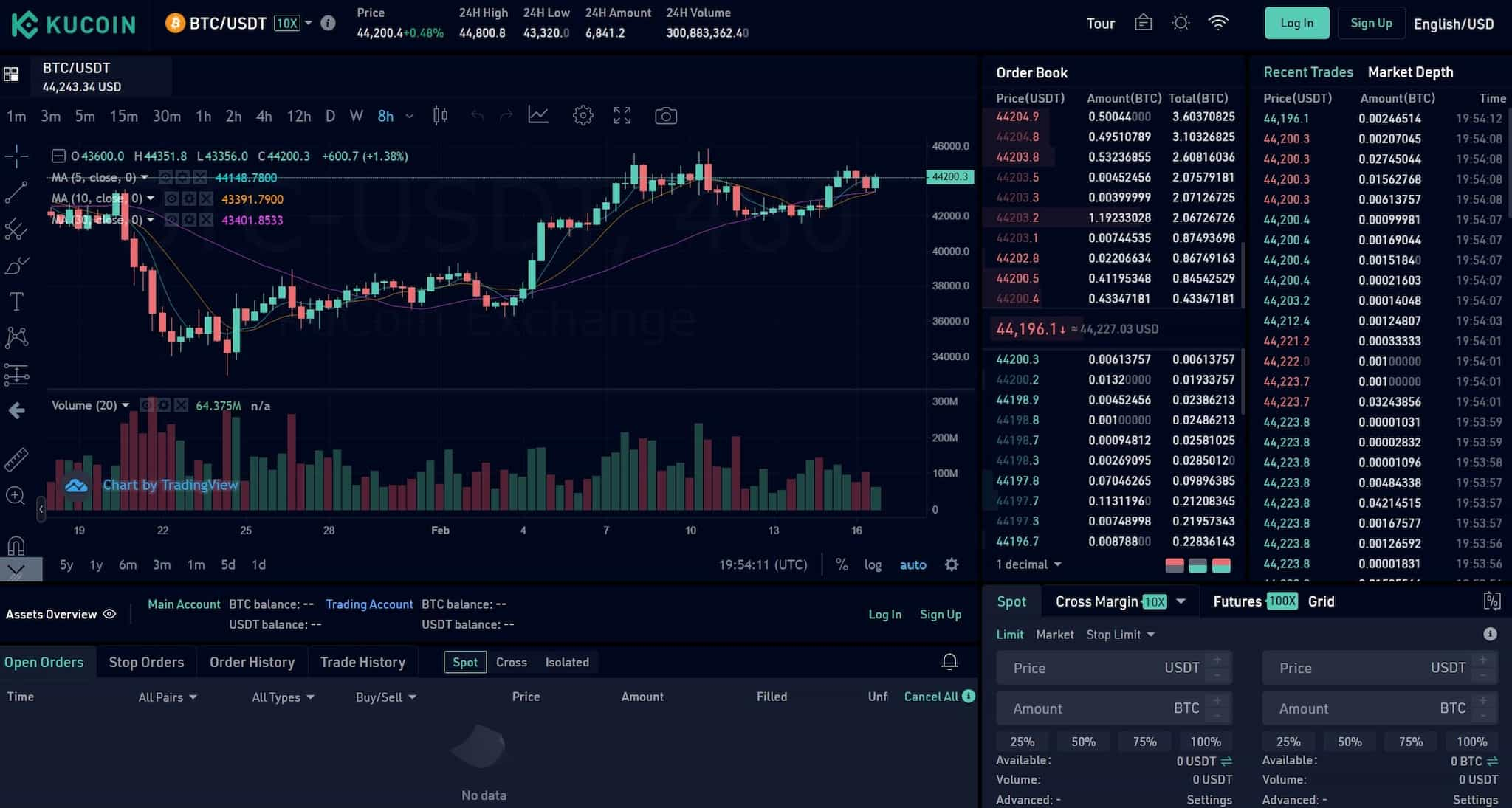
While the platforms are tied for user-friendliness in terms of navigation, I would have to tip the scales slightly towards Binance simply for their self-help knowledge base section and the Binance Academy.
Binance has put some serious effort into education and have the most robust knowledge articles and offer some of the highest quality crypto education in the industry. I am a huge fan of educational and knowledge articles. More often than not, an issue can be a brief article away from you resolving yourself within minutes. A few clicks around their knowledge articles/Binance Academy, and you’ll be zipping around the platform and know everything you need to know in no time.
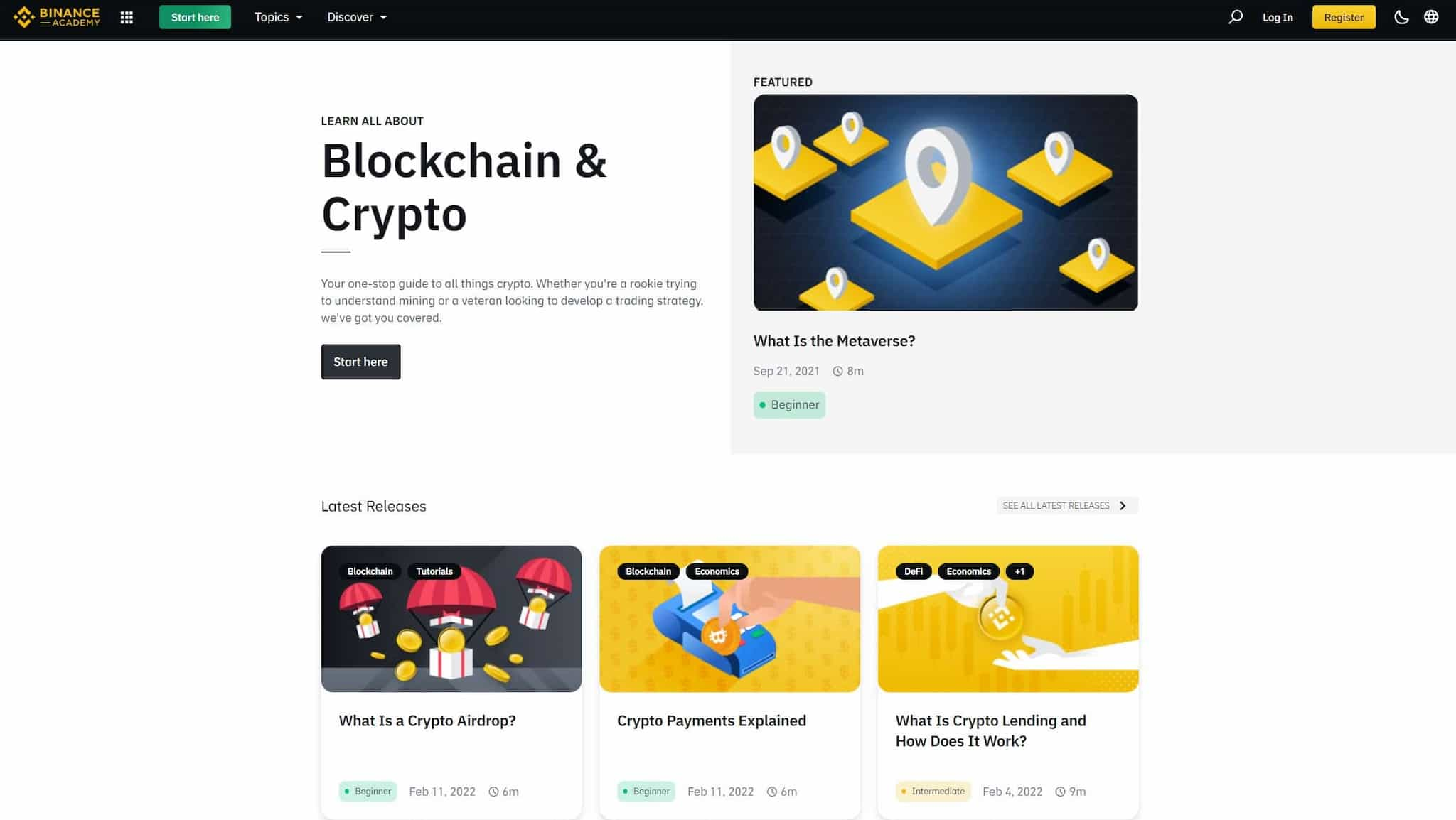
KuCoin also has a really good self-help section, though, and both platforms offer live chat support to come to the rescue when in need.
Binance vs KuCoin: Fees
Both Binance and KuCoin utilize a tiered fee structure. The fees vary significantly depending on the trading volume conducted every 30 days. For Binance fees, the highest for the infrequent trader sits at 0.1% for the maker and 0.1% for taker fees. Binance has their native BNB token on the platform, and the more BNB users hold, the lower the fees. Users who choose to pay their fees in BNB can enjoy an additional 25% off those fees. The fee table for Binance can be seen below:
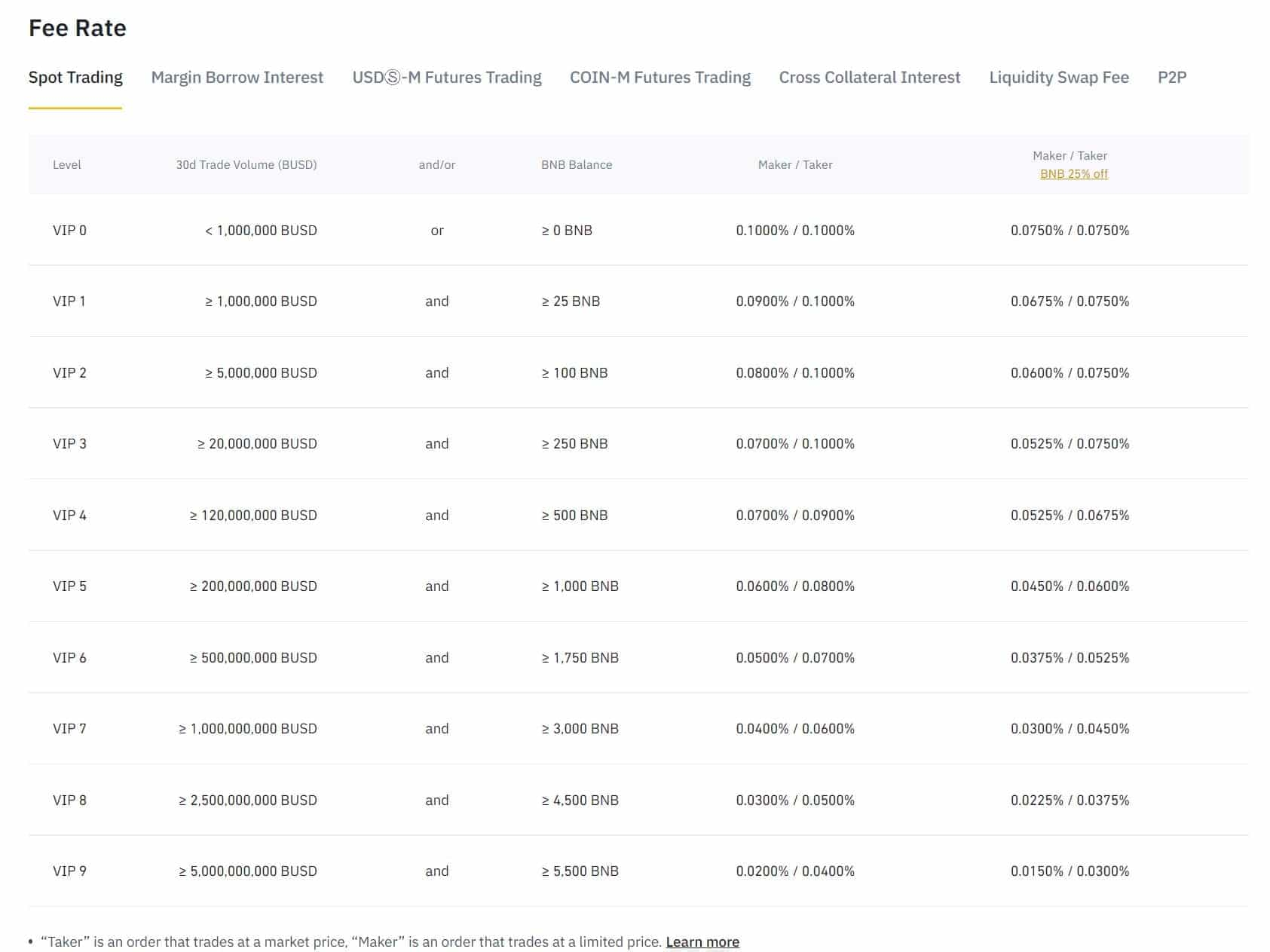
Binance traders already enjoy some pretty low fees, but we managed to sweet-talk the folks over at Binance to provide our readers with an even sweeter deal. Users who sign up using our Binance Sign-up link get an exclusive additional 20% off trading fees for life, and up to $600 bonus!
Over at KuCoin, the most traders will pay for KuCoin fees is 0.1% for both maker and taker fees and similar to Binance, traders can save an additional 20% if they pay their fees in KuCoin’s native KCS token. KuCoin fees get lower the more KCS tokens are held and the higher the 30-day trading volume. Interestingly at KuCoin, if you are a serious whale making big trades, the fees actually become negative! So KuCoin provides a nice little additional benefit to attract big money traders. KuCoin’s fee structure can be seen below:
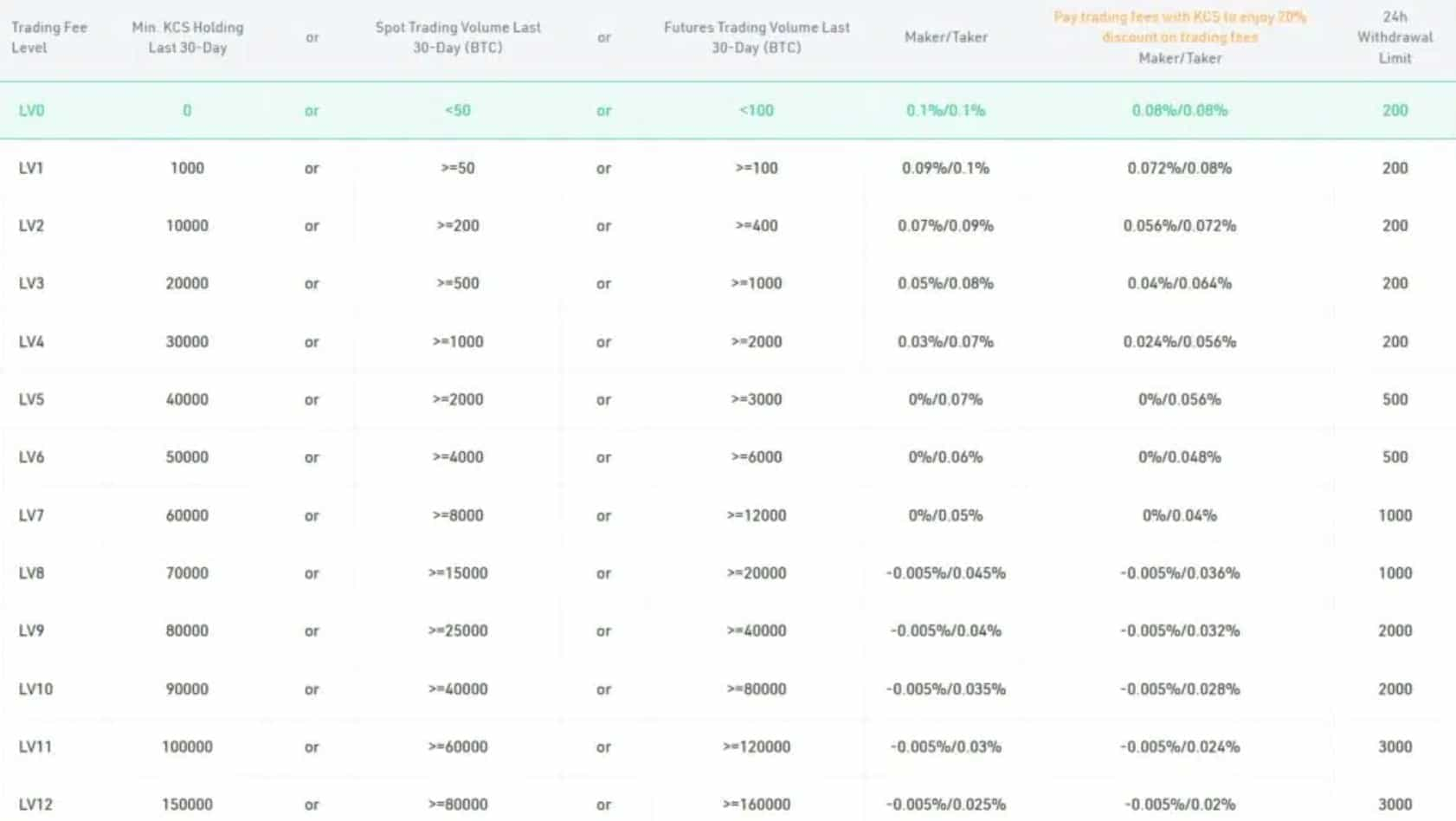
And wouldn’t you know, Guy over here at the Coin Bureau has been busy making his rounds chatting to the folks at KuCoin and negotiated a pretty good deal for our readers. As a result, the Coin Bureau community can enjoy an additional 60% discount and access to a free trading bot when they sign up for KuCoin using our KuCoin Sign-up link.
To summarize the fees section, both platforms are very competitive regarding fees. Depending on how many BNB or KCS tokens are held and how much trading will be done, the differences are negligible for the average trader.
Binance vs KuCoin: Deposit and Withdrawal Fees
Crypto withdrawal fees on KuCoin are dependent on the token and network. A complete directory of KuCoin's crypto withdrawal fees and tokens can be found on the KuCoin VIP Levels page. The fee to purchase crypto with a debit or credit card ranges from 3.5% to 5%, depending on the third-party application being used. There are no fees for SEPA bank deposits, and withdrawing fiat is not supported on KuCoin.
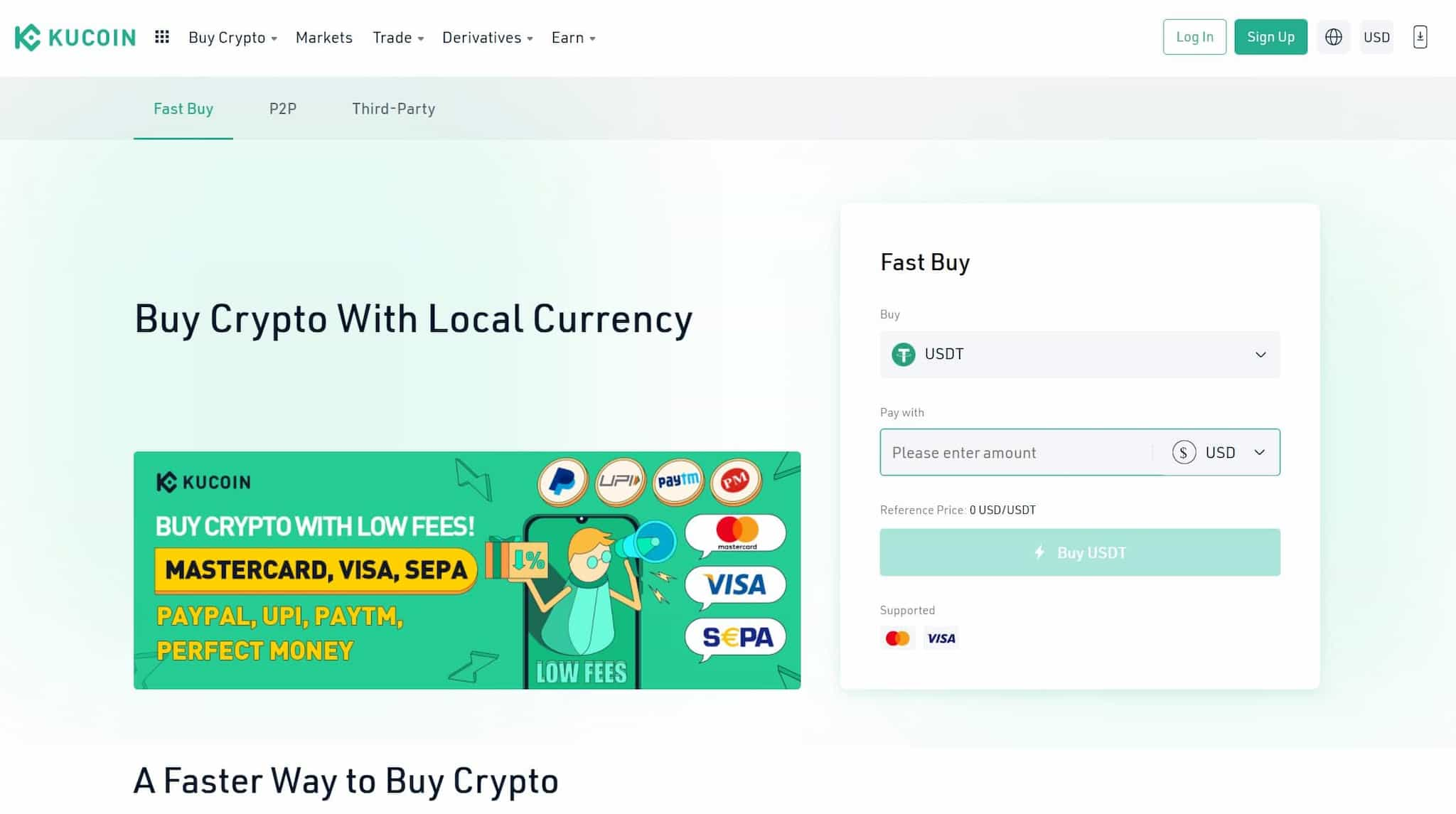
Binance has no deposit fees for depositing crypto, and crypto withdrawal fees vary depending on the coin and network, so be sure to check out the complete directory on Binance's Crypto Withdrawal Fees page.
For fiat deposits, the fee varies depending on the currency and method used. Users can expect to pay between 1.8% and 3.5% for card deposits, while Signet and SWIFT bank deposits are free. Binance changes supported deposit methods and rates frequently depending on the different currencies, so it is best to keep an eye on the Binance fees page for the most up-to-date information.
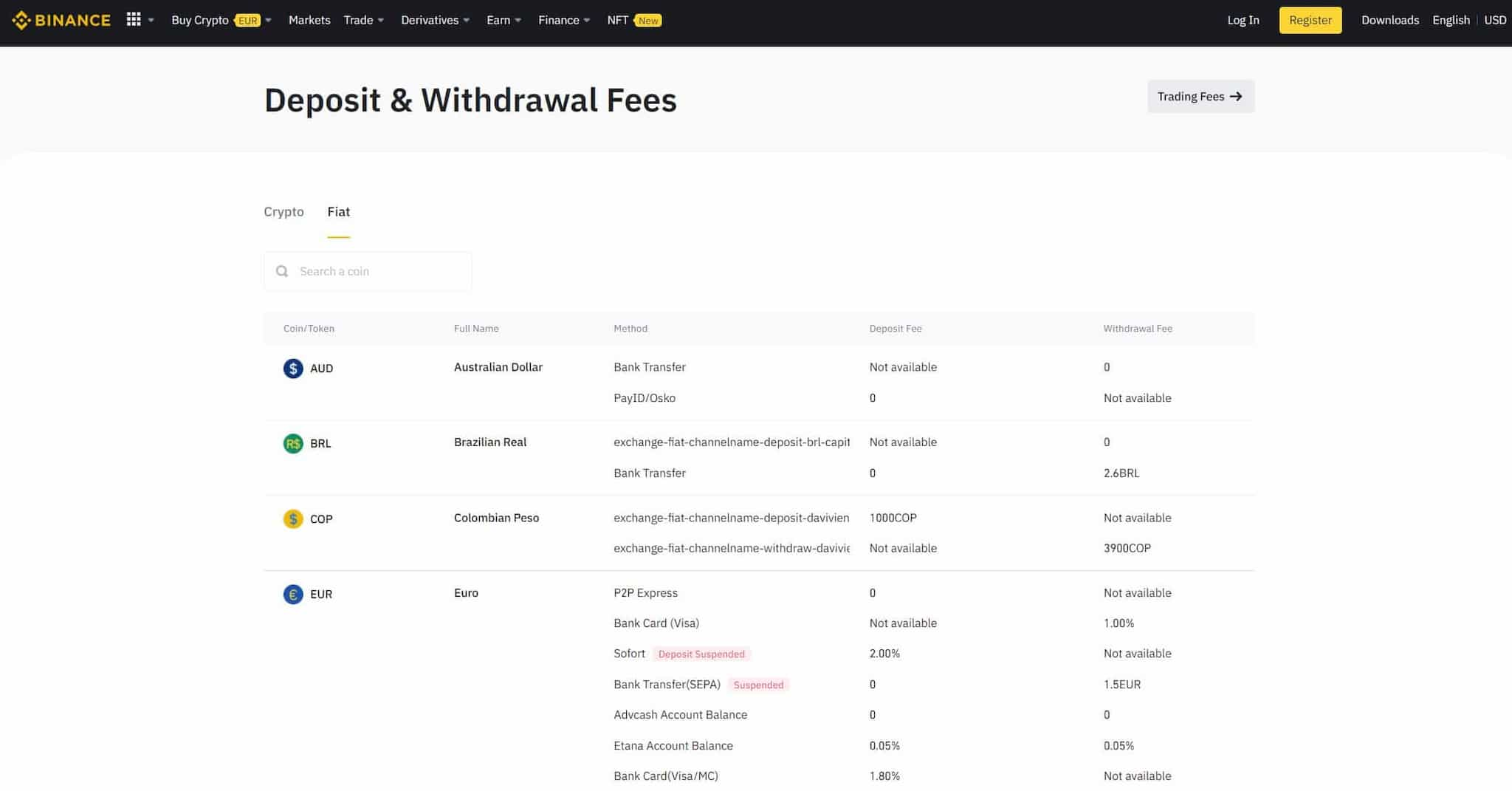
For fiat withdrawals on Binance, the fees are either a flat fee or percentage depending on the method used and currency. The withdrawal fees are quite low, ranging between 0.05% for Euro withdrawals made using Etana, up to a flat rate of $US 15 for USD Swift withdrawals. You can find these figures by navigating to the Binance page for fiat fees.
Binance definitely takes the cake here over KuCoin, as they have multiple options for spending or cashing out those sweet crypto gains. Users on KuCoin will need to find an alternative fiat-offramp.
Binance vs KuCoin: Security
Both Binance and KuCoin meet high industry standards regarding security, and they do not take this responsibility lightly. Both Binance and KuCoin keep the majority of their funds in cold storage and out of the reach of hackers while providing users with some robust extra security enhancements.
KuCoin has partnered with Onchain Custodian to help ensure the crypto held on their exchange is secure. In addition, they are covered by insurance to reimburse customers in the event of a hack. It is important to note that the KuCoin exchange did experience one of the largest exchange hacks in history in 2020. Hackers were able to make off with $275 million worth of customer funds.
KuCoin worked diligently and took swift action, working with crypto projects and police agencies, recovering many of the funds and tapping into their insurance fund to reimburse all affected customers.
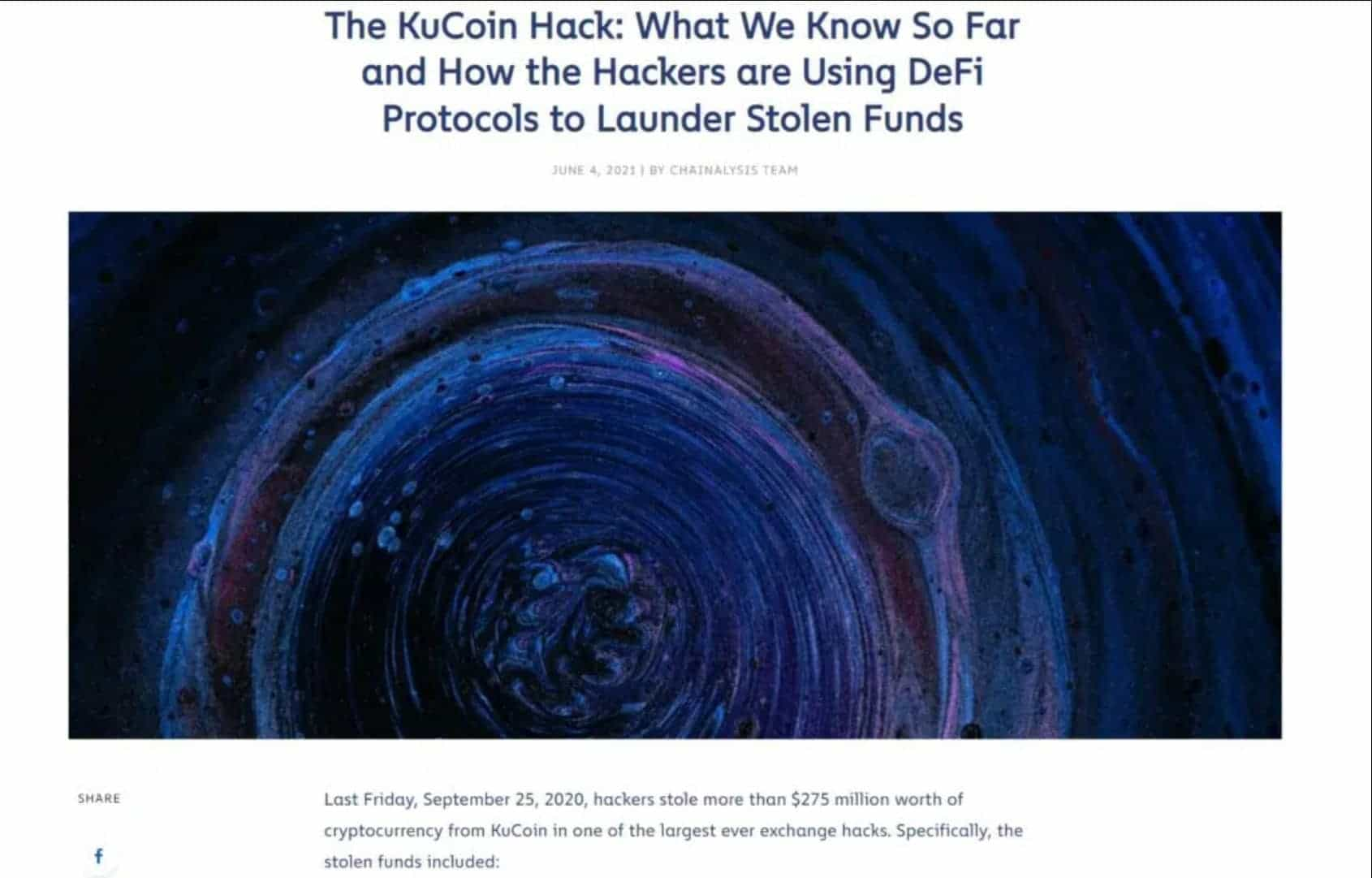
Binance offers their users extensive additional optional security features, which cater to the most security-minded crypto users. The US dollars placed in Binance are FDIC insured as the money is held in regulated US bank accounts.
While cryptocurrencies are not insured, Binance does set aside money from trading fees to hold in their “Secure Asset Fund for Users” (SAFU) emergency insurance fund to pay back and protect users in the event of a hack. It is important to note that Binance also suffered a significant hack in 2019, which resulted in 7,000 Bitcoin being stolen from the exchange. No user funds were stolen, only the Bitcoin that Binance did not have secured in cold storage.
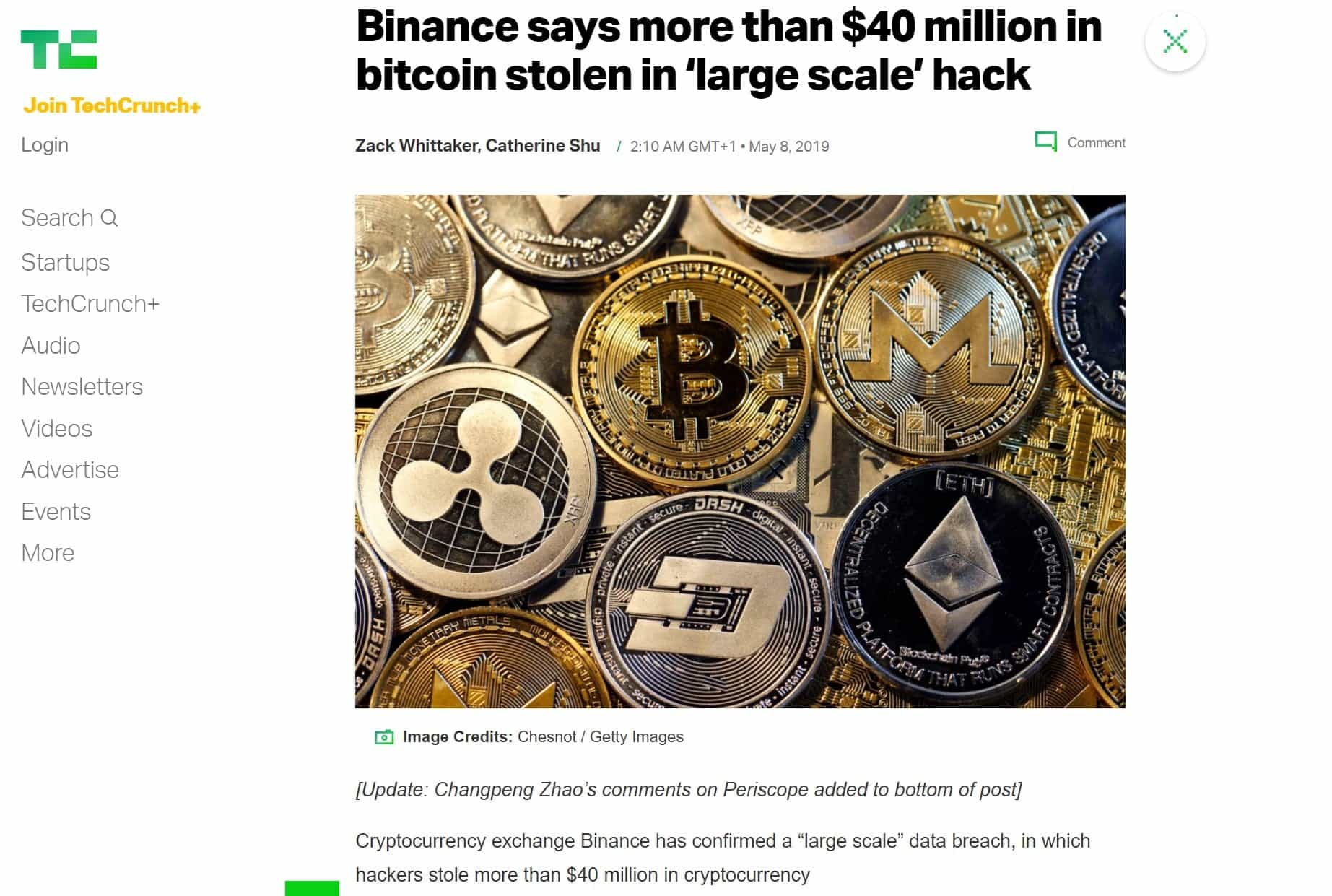
KuCoin offers a mix of security protocols and offers users the following features:
- 2FA for login
- Security questions
- Anti-phishing safety phrase
- Login safety phrase
- Trading password
- Activity monitoring on the system
- Phone verification
- Email binding and notifications for suspicious activity
- Whitelisting IP addresses.
While Binance offers:
- 2FA for login and withdrawals
- Universal 2nd Factor Authentication (U2F) Support
- Device Authorization list
- Anti-phishing number in emails
- Login safety phrase
- Trading and withdrawal password
- Withdrawal verification email
- Activity monitoring on the system
- Whitelisting Withdrawal addresses
- Whitelisting IP addresses
I would have to say that both platforms are on par regarding security. They both offer robust security features and have proven that they are willing to reimburse customer funds in the unfortunate event of a hack. Both exchanges also follow industry best practices utilizing activity monitoring software and keeping funds in cold storage.
Binance vs KuCoin: Support
Binance and KuCoin are often praised for having pretty good customer support, which has often been a hot topic of harsh criticism against many popular crypto exchanges. I really appreciate that both exchanges offer live chat support, which is very convenient, along with email support for users who don’t feel like waiting around to chat to one of the friendly support staff members.
Binance has a fantastic self-service section that gives users the power to resolve many of their own issues, such as password resets, resetting 2FA, and missing crypto deposits. Take a look at the self-help services offered by Binance below:
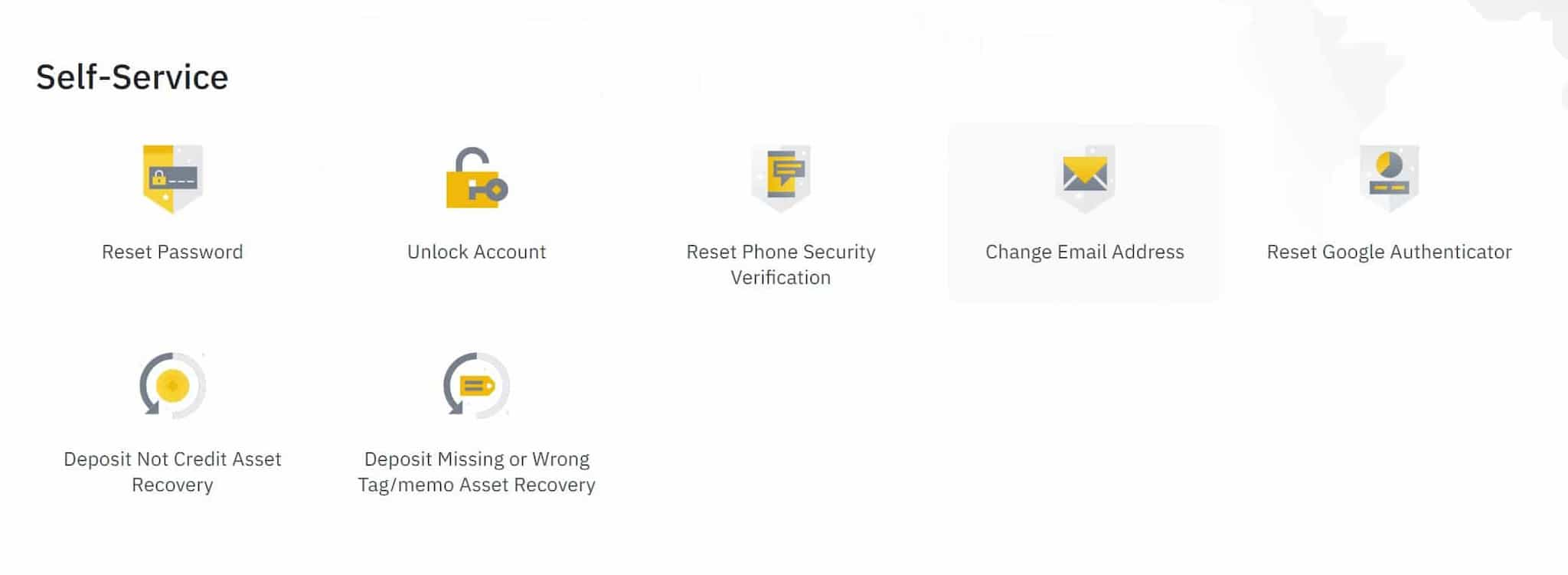
Neither exchanges' support team can really be knocked as both Binance and KuCoin have done an incredible job scaling up their support team and offer high-quality, top-notch support with pretty quick response times.
I would have to give the edge to Binance, though, because of their self-service section and in-depth knowledge articles that really empower all crypto users to learn everything they need to know about the entire crypto industry. The Binance academy is one of the best resources to learn about everything crypto. Unlike other platforms, their support section does not just focus on Binance but the entire crypto industry. A huge kudos to them as crypto education is so important and the key to mass adoption.
Pro Tip: If you have questions or issues about your exchange platform of choice, don't forget that most crypto exchanges have very active communities on social media sites like Reddit, Facebook and Telegram. KuCoin even has a community section on its site; it is often worth posting questions in these community forums as it can result in quicker answers.
Now, Let's take a look at each exchange individually.
Binance Overview
What is Binance?
As I am sure you have already pieced together, Binance is a crypto trading platform that offers some of the lowest fees and the most significant number of features around. In addition, Binance caters to crypto enthusiasts of every background and any goal, offering features to suit cryptonauts regardless of what they are trying to achieve on their crypto journey.
It really is a massively robust platform. There is a reason it has been the number one exchange in the world for many years as it is like the Swiss army knife of exchanges, an all-in-one platform.
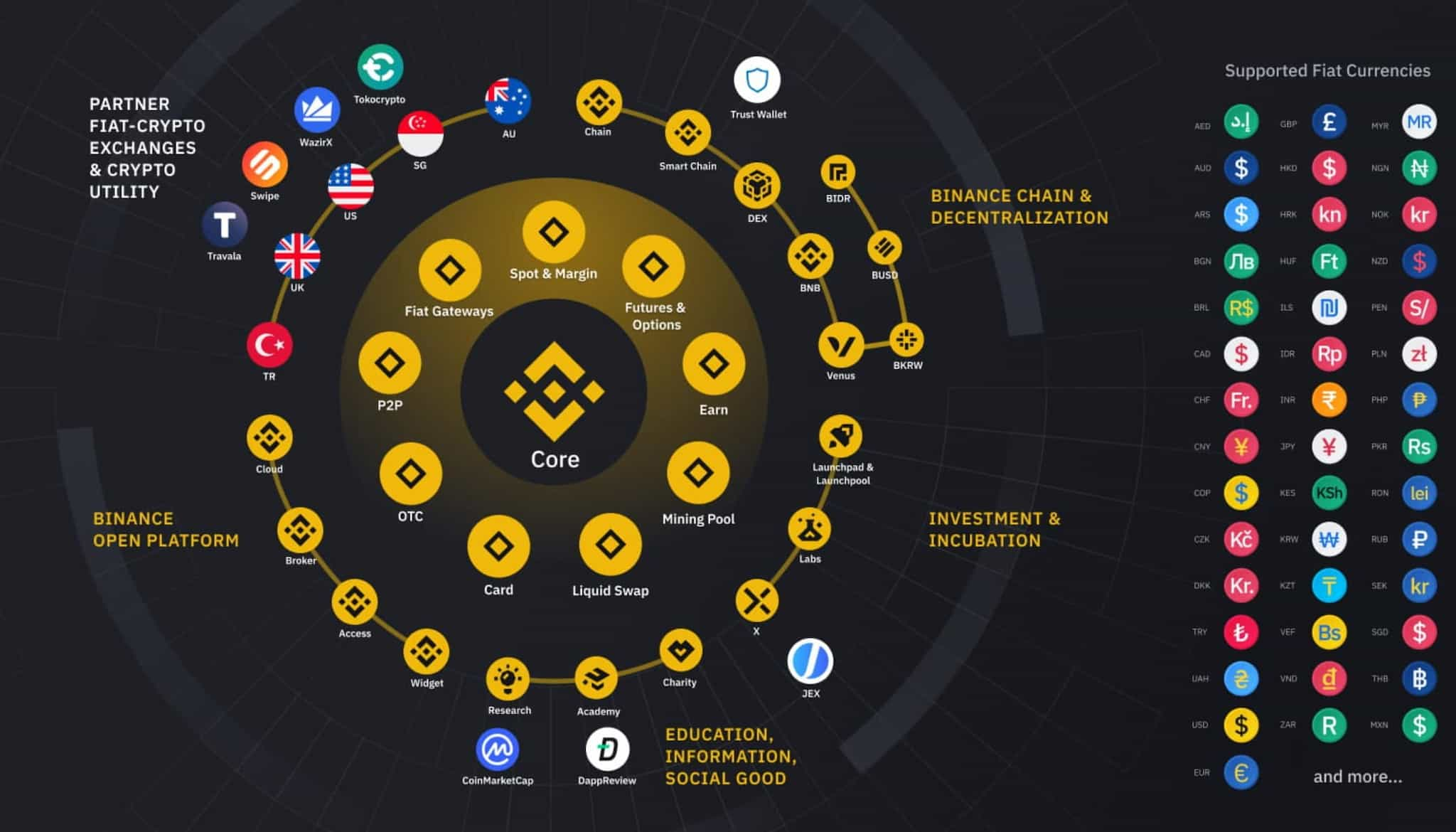
Binance can be accessed by traders worldwide and have even set up Binance.US to cater especially to American-based users. Feel free to check out Guy's in-depth Binance.US review. Binance was originally a Hong Kong-based exchange launched by Changpeng Zhao (AKA CZ) in 2017. He stepped down as CEO in November 2023 after pleading guilty to a money laundering charge by US authorities.
Following struggles with the Chinese government and its views on cryptocurrency, Binance moved to an offshore location, remaining location agnostic for several years, having no headquarters until recently establishing itself in the Cayman Islands.
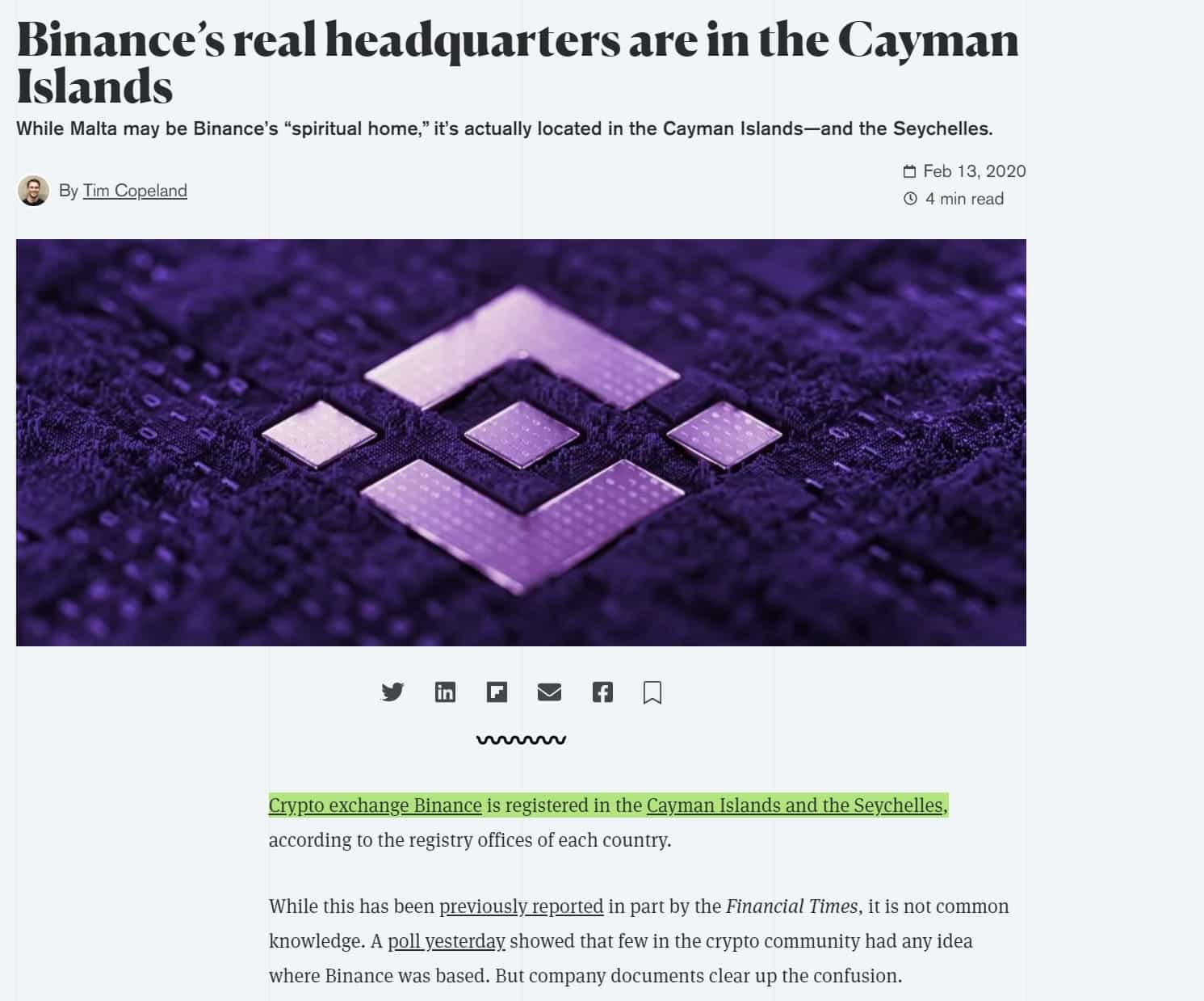
Even though Binance wasn’t the first crypto exchange, it quickly exploded in popularity. It claimed the number one spot due to the trading platform being suitable for beginners and pros and simply offering everything under the sun such as savings accounts, earn features, staking, debit cards, lending, borrowing, and hundreds of different active markets, creating a paradise for both active traders and passive hodlers.
Currencies Offered
Binance supports over 400 digital assets and 16 fiat currencies directly on the platform with an additional approximately 60 currencies supported through various third-party integrations such as Sofort, SEPA, Advcash, Etana, Visa/Mastercard, PayID/Osko, Bank transfers, Mobile Money, Yandex Money, Payeer, GEO Pay, P2P and others.
Binance is often praised for selecting harder-to-find altcoins as they are often among the first major exchanges to list tokens from new projects. What also helps is that through the Binance Launchpad, Binance users are often among the first to receive tokens from brand new projects.
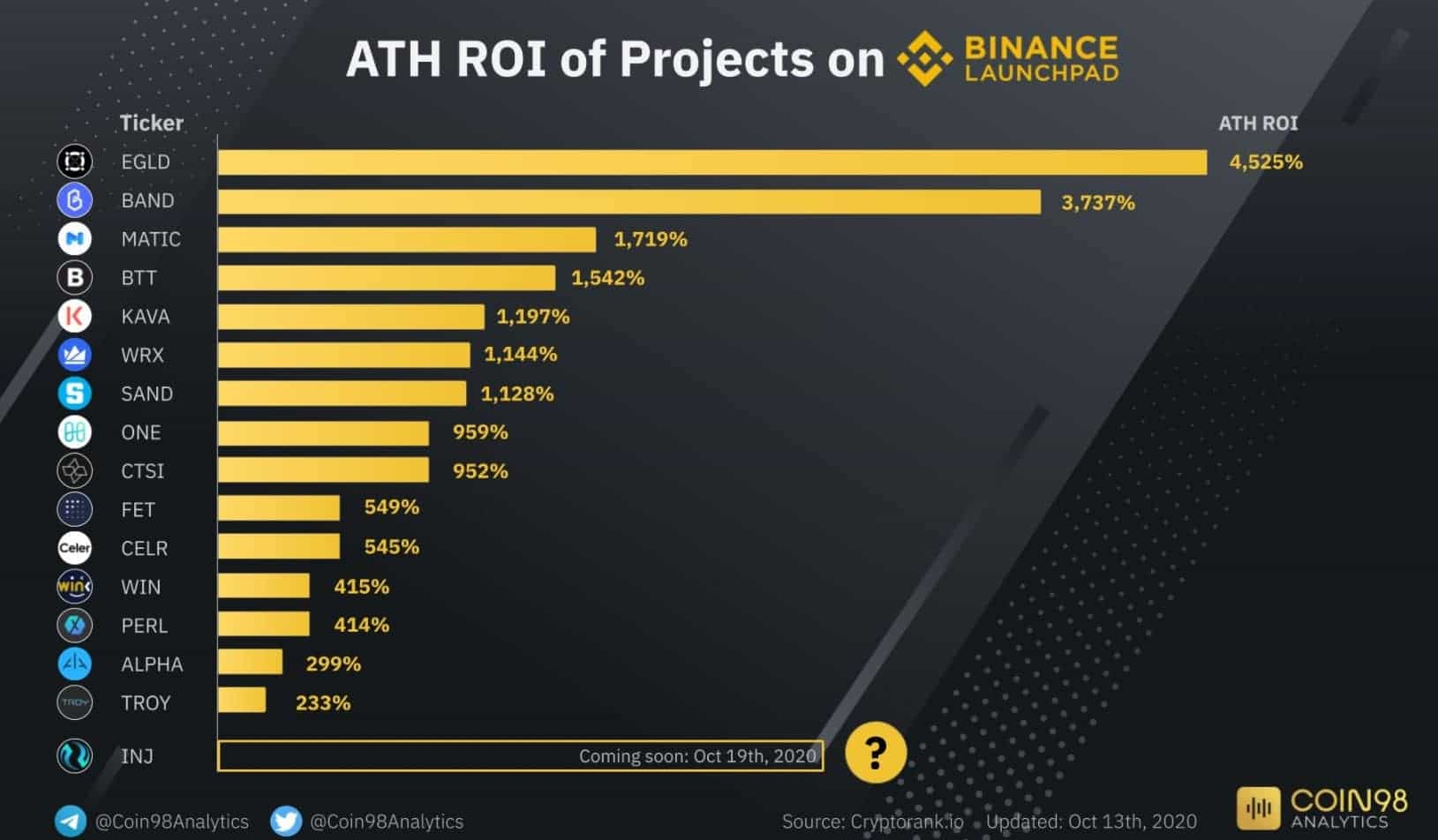
Binance has keeps an updated and searchable page of their supported crypto assets which is great for searching to see if your favourite crypto tokens are available, and they have a separate page showing fiat currency support and fees.
Binance exchange also has their exchange token BNB, which has a lot of utility and use cases in the Binance ecosystem. For example, the BNB token provides trading fee discounts, staking and higher cashback rewards on the Binance debit card.
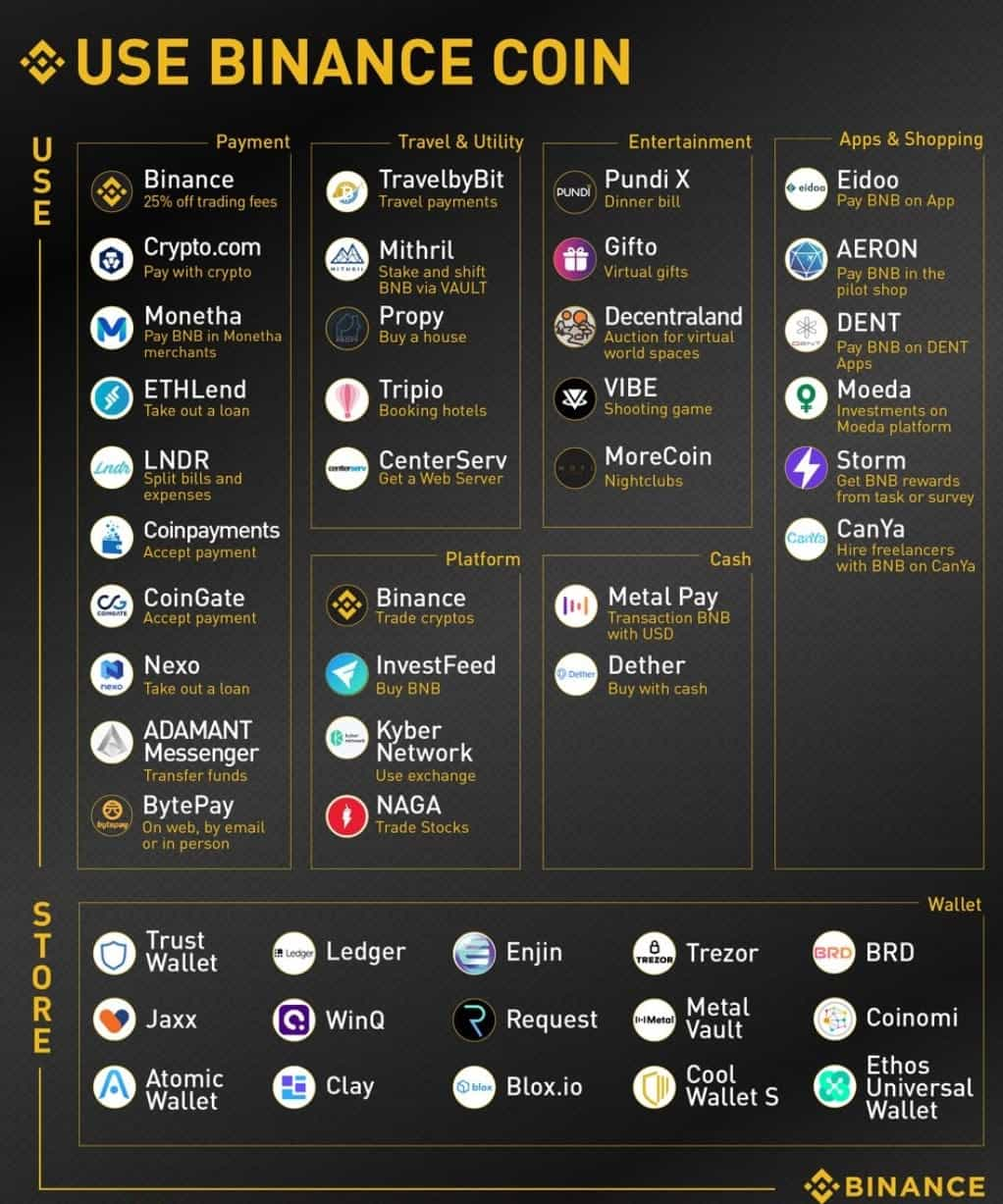
Binance Products Offered
As mentioned, Binance has a ridiculously massive catalogue of products available. In the interest of keeping this article short, I will only be covering a high-level overview of each one. For a more in-depth look, be sure to check out our dedicated Binance Exchange Review.
Here is a list of Binance’s products at a glance:
- Binance Academy – A learning hub for blockchain and crypto education resources, along with how-to articles and FAQs.
- Binance Card – A crypto debit card powered by Visa that can be used for everyday purchases just like a regular bank card. The card can be pre-loaded with fiat, or loaded with crypto assets that get converted to cash at the time of purchase.
- Binance Charity – A not-for-profit foundation dedicated to advancing blockchain philanthropy and sustainable global development.
- Binance Cloud – Enterprise cryptocurrency exchange solutions for cryptocurrency ventures.
- Binance Crypto Loans – Users can take out crypto loans secured by their cryptocurrency assets.
- Binance DEX – Binance’s decentralized exchange built on the Binance Chain.
- Binance Fiat Gateway – A fiat gateway that lets you purchase cryptocurrencies using various fiat currencies.
- Binance Futures – Binance’s crypto-derivative platform lets users trade futures with up to 50x leverage.
- Binance JEX – Binance’s cryptocurrency futures and options trading platform.
- Binance Labs – Binance’s infrastructure impact fund and initiative to empower blockchain projects.
- Binance Launchpad – Binance’s crypto crowdfunding platform for launching IDOs/IEOs/ICOs. Binance innovation made Launchpad the first crowdfunding platform for IEO’s in the industry.
- Binance OTC – Over-the-counter trading desk for institutions and other large-volume traders.
- Binance P2P trading – A peer-to-peer crypto trading platform that supports payments via WeChat, AliPay, Bank Transfers, and QIWI.
- Binance Research – Institutional-grade research platform conducting analysis for investors in the crypto space.
- Binance Savings – Ability to squirrel away funds for passive interest income or lending them out to earn higher interest.
- Binance Staking – Binance staking feature lets you stake certain cryptocurrencies and earn a nice APY on supported cryptocurrencies.
- Binance USD (BUSD) and Binance GBP stablecoin – Binance’s regulated stablecoins, released in partnership with Paxos Trust Company.
- Trust Wallet –The official secure and hugely popular decentralized wallet of Binance.
Let’s dive into some of these a bit deeper.
Binance Futures
The Binance futures markets allow traders to trade crypto derivatives for dozens of perpetual contracts for different coins and tokens. Launched in August 2020, derivatives trading on Binance became hugely popular as it allowed for leverage up to 125x. However, the leverage has since been reduced to 50x. These contracts come in two varieties: USDT-M futures and COIN-M futures.
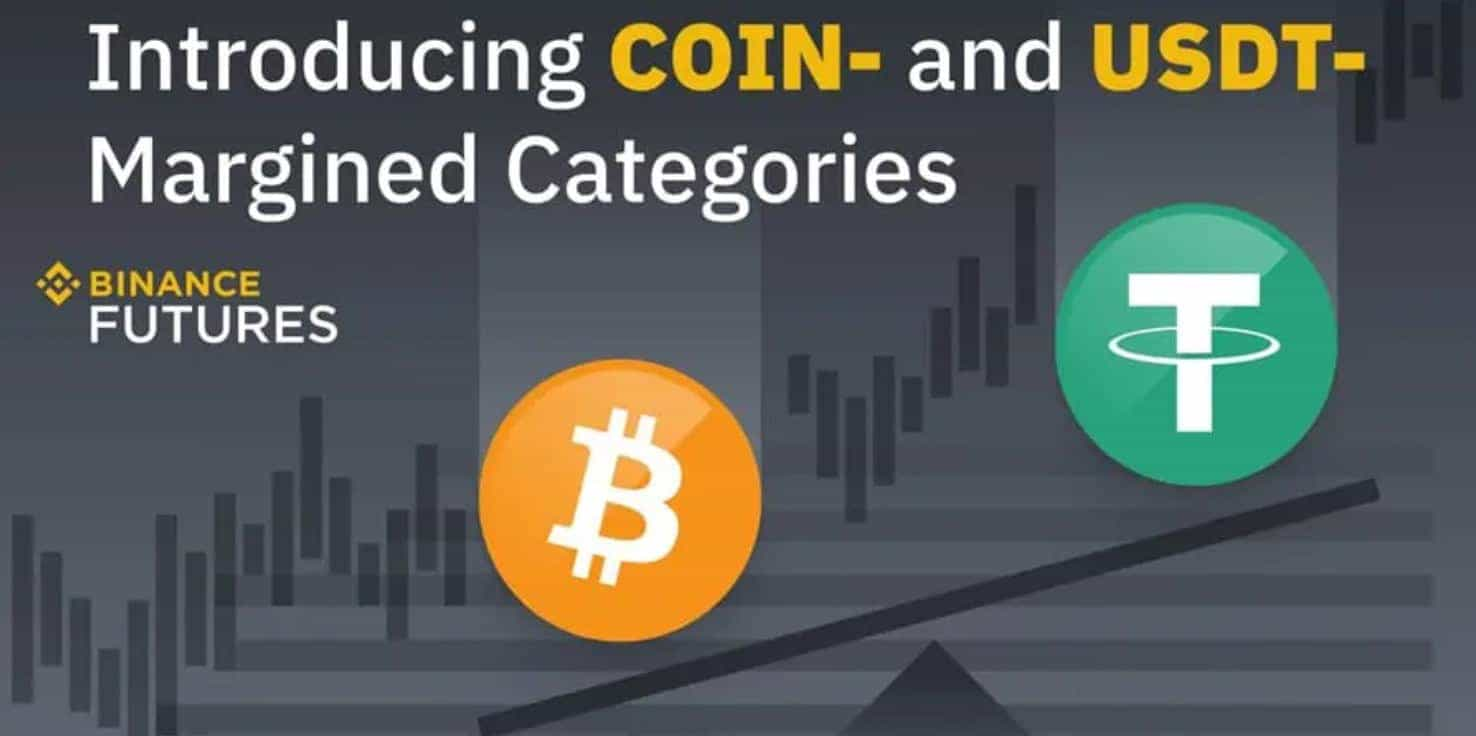
Futures markets are available for perpetual and quarterly contracts for over 130 cryptocurrencies listed on the futures markets.
Vanilla Options
Binance offers Vanilla Bitcoin options contracts which are priced and settled in USDT. This gives users more choices to diversify their portfolios and manage their market exposure. Users can buy put or call options for hedging and trading.
Vanilla Options are a financial trading instrument that gives users the right to buy or sell an asset at a predetermined price within a specified time. This allows users to trade “European-style” options contracts where users can profit by predicting the price of BTC/USDT bull or bear within a certain period.
Leveraged Tokens
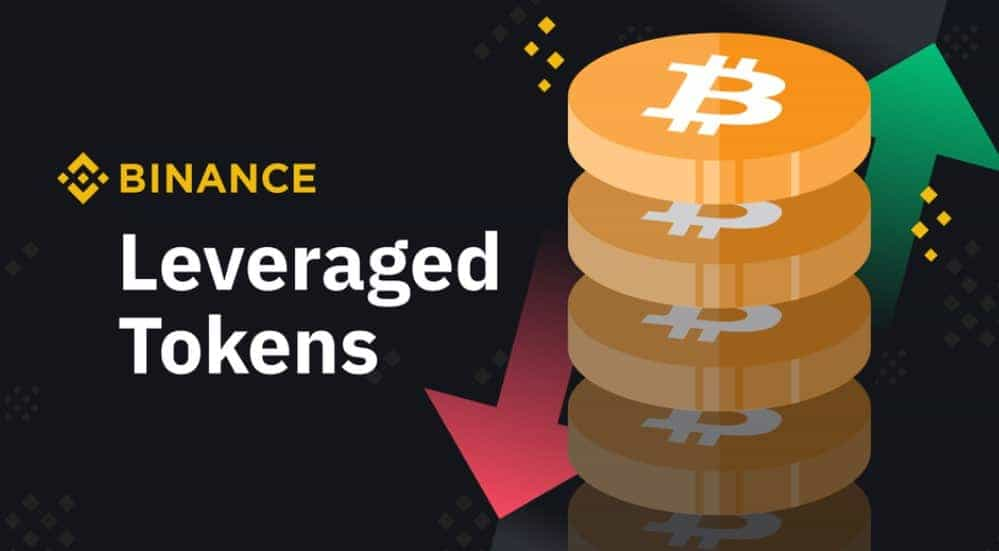
Binance Leveraged Tokens are a derivative product that gives traders leveraged exposure to an underlying asset at a predefined leverage level. Leveraged tokens can be traded on the spot market, and each leveraged token represents a basket of perpetual contract positions.
Unlike margin trading, leveraged tokens allow traders to gain exposure to leveraged positions without having to put up any funds as collateral or worry about the risk of liquidation. Binance offers leveraged tokens of up to 4x leverage.
Binance Earn
This is one of the most popular features of Binance and is a great staple for many crypto hodlers. Why let your crypto collect dust when you can earn income from them instead?
Users can earn passive income by staking, depositing into savings accounts, liquidity farming, depositing into the BNB vault, getting involved in the launchpad and others. There are both fixed, and flexible term options and the APYs vary greatly depending on the token, the term, and the level of risk. There are low risk and high-risk options for any risk appetite. There are way too many ways to earn with Binance to list them all here, and it could use its own separate article. Be sure to check out their detailed Earn article if you want to know more.
Here is a look at some of the different products available in Binance Earn:
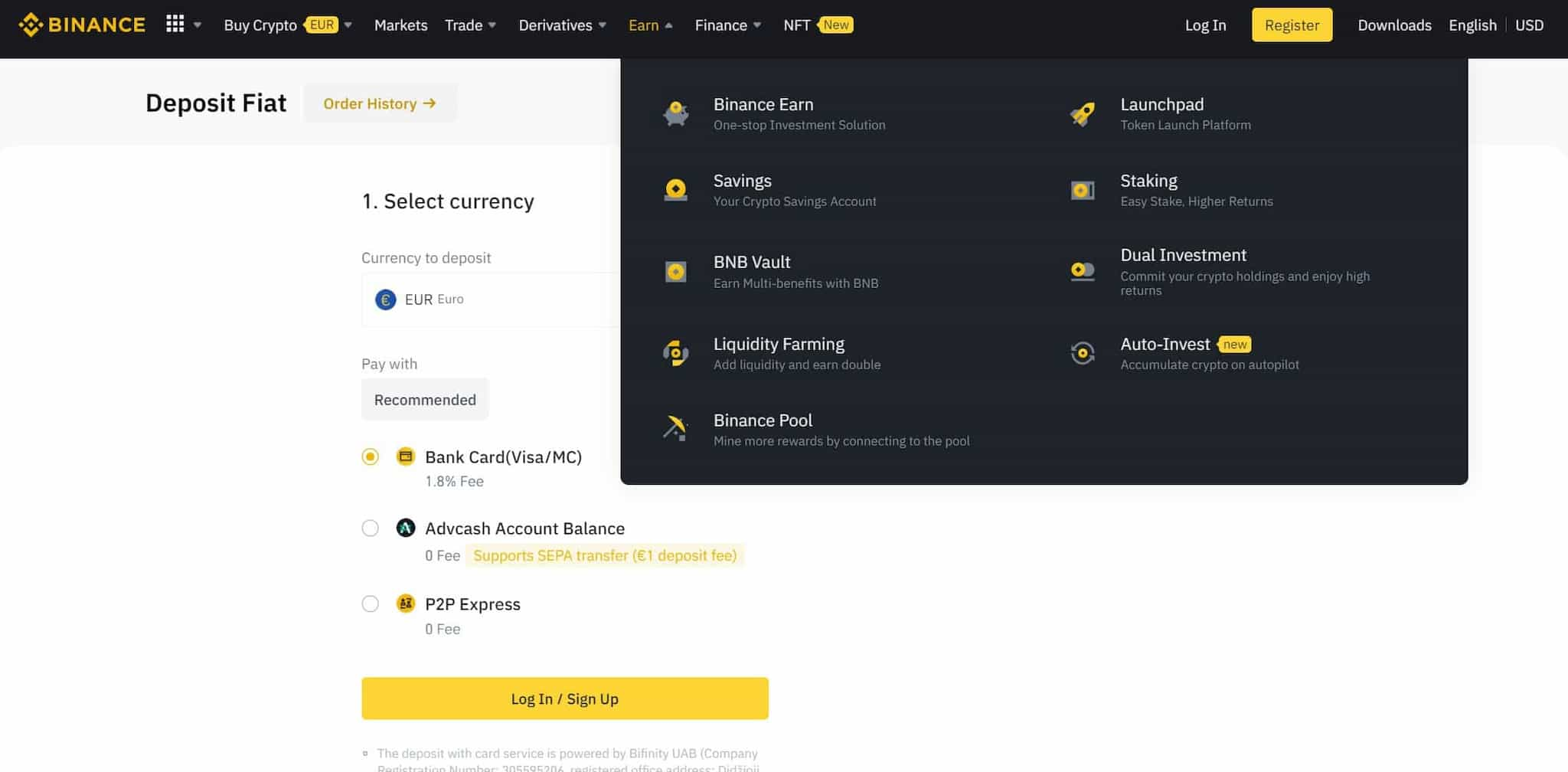
NFT Marketplace
Binance was the first major exchange to launch an NFT marketplace which has become wildly popular as folks are going crazy over NFTs! Users can use the Binance marketplace to mint, buy, and sell NFTs separately or as part of a collection.
Because the Binance NFT marketplace runs on the Binance Smart Chain, the marketplace quickly gained in popularity as Binance offered a much more cost-friendly alternative than Ethereum-based NFT marketplaces. For those NFT minting enthusiasts, be sure to check out our picks for the Top Platforms for Minting and Selling NFTs to know which one is best for you.
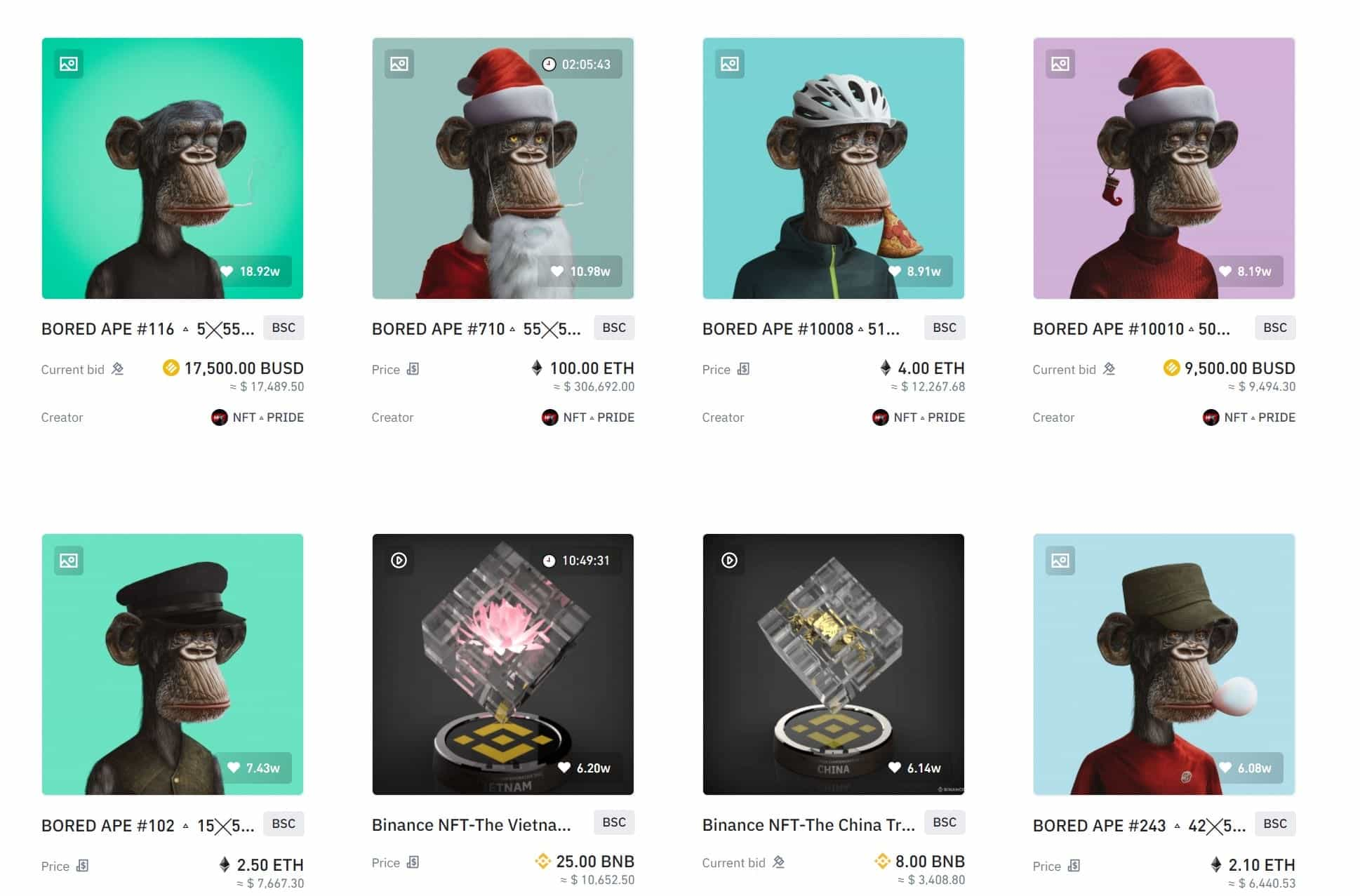
Types of Accounts
Binance has 10 tiers of accounts that are determined by VIP level. These VIP levels can be upgraded in two ways: Either by achieving a certain level of 30-day trading volume or by holding a certain number of BNB tokens. The higher the level, the lower the fees for trading. Here is a look at the tier structure:
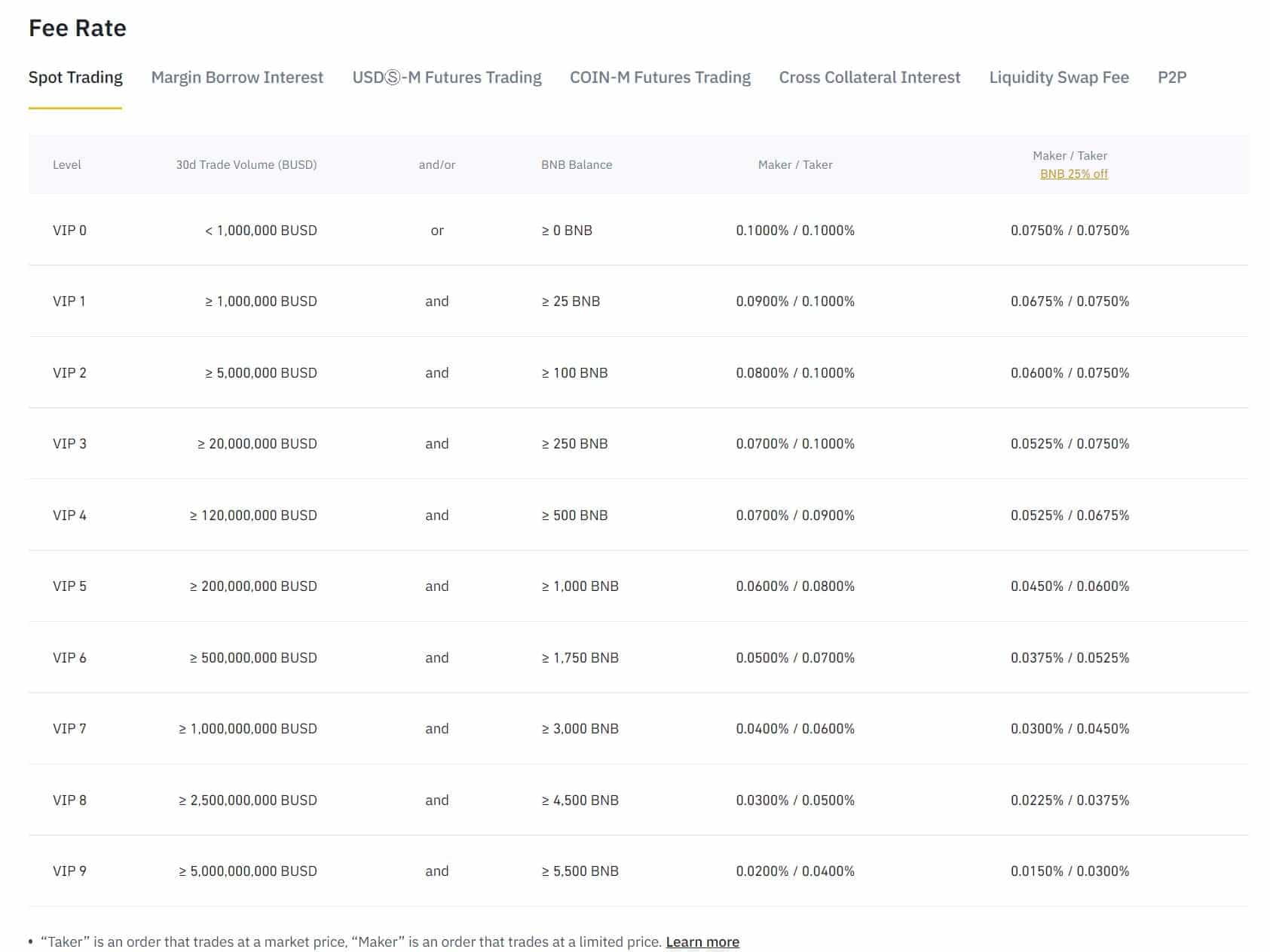
That should give you a pretty decent overview of what Binance brings to the table. If you are looking to get started with Binance, Guy has a wonderful Binance tutorial to help with the getting started process.
Now let’s take a closer look at KuCoin.
KuCoin Overview
What is KuCoin
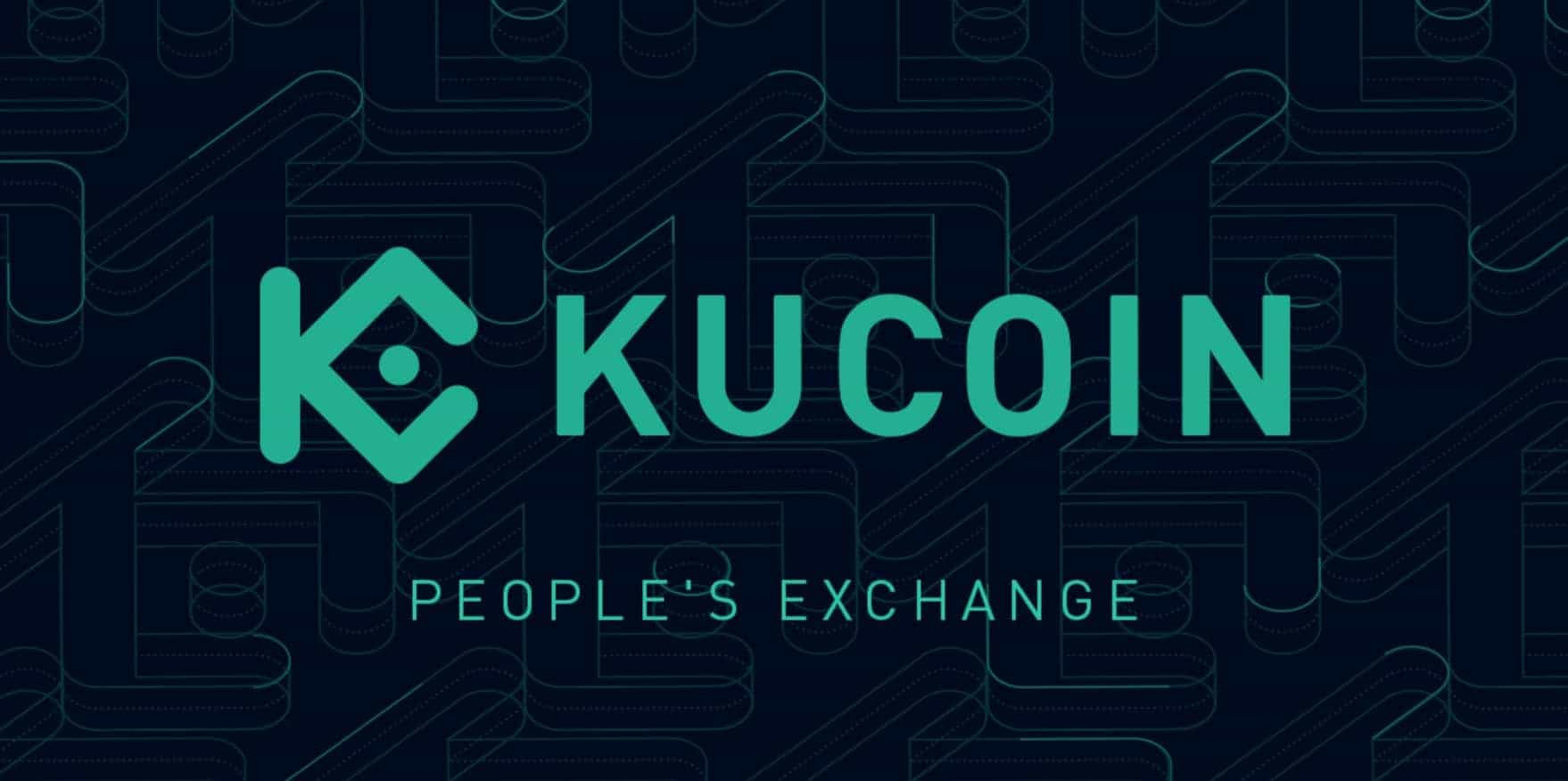
KuCoin was one of the first crypto exchanges to cater to serious and professional traders. Right from the get-go, their niche focused on attracting professional traders who needed a robust and comprehensive trading platform. KuCoin did this very well and has since expanded into following a similar path to Binance and offering many products and features.
One of KuCoin’s greatest strengths is its ability to list hard-to-find altcoins quicker than any other major exchange. As a result, they have the largest selection of altcoins available. Many crypto users who primarily use exchanges like Binance or Kraken will often keep KuCoin as a secondary exchange to pick up new altcoin gems that cannot be found anywhere else.
KuCoin has been providing traders with high-quality and reputable services since 2017, but the team actually began working in blockchain all the way back in 2011 and started designing KuCoin in 2013. It would be years until the team would launch the platform, waiting until they were sure it was perfected and ready for market. Now that is dedication!
Since 2017, the platform quickly rose in adoption and popularity as it was at the time, one of the few professionally developed trading platforms. Users continue to use the platform as they love both the standard trading platform and the gamified, Vegas-like trading section, which offers a very entertaining way to engage with crypto trading.
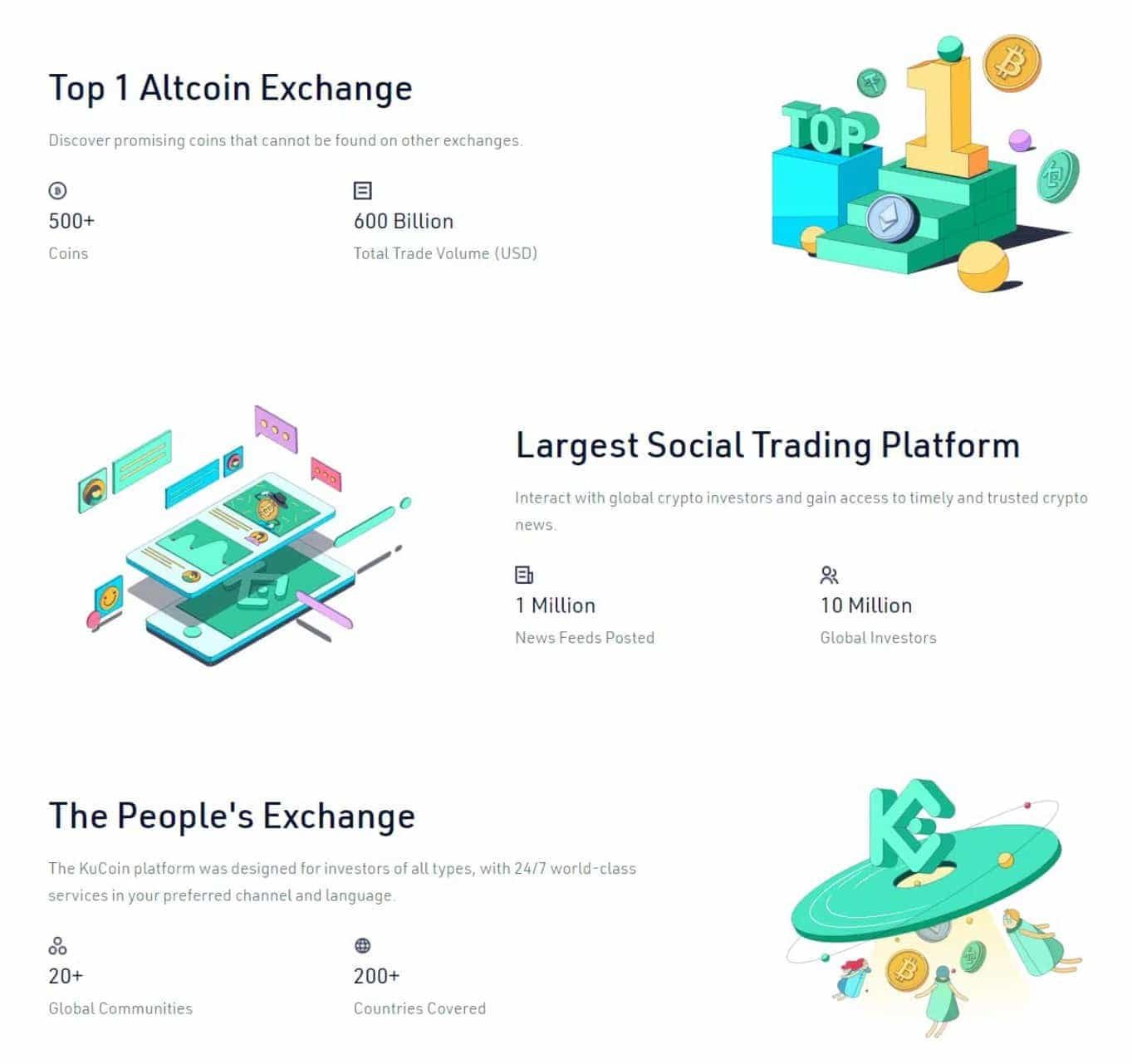
KuCoin users love the low fees on the platform, the comprehensive security features and services that cannot be found on other platforms. While both Binance and KuCoin once offered KYC-free trading, both exchanges buckled under global pressure and have implemented mandatory KYC for users. Though KuCoin held out until July 2023, KYC is now mandatory at all levels.
Currencies Offered
KuCoin is a global exchange as they offer fiat support for over 50 different currencies and an astounding 650+ digital assets. As a result, users from exotic locations will often opt for KuCoin as they can avoid those nasty conversion rates and not need to swap for supported currencies.
The KuCoin Knowledge articles have a page dedicated to supported fiat currencies and supported crypto assets.
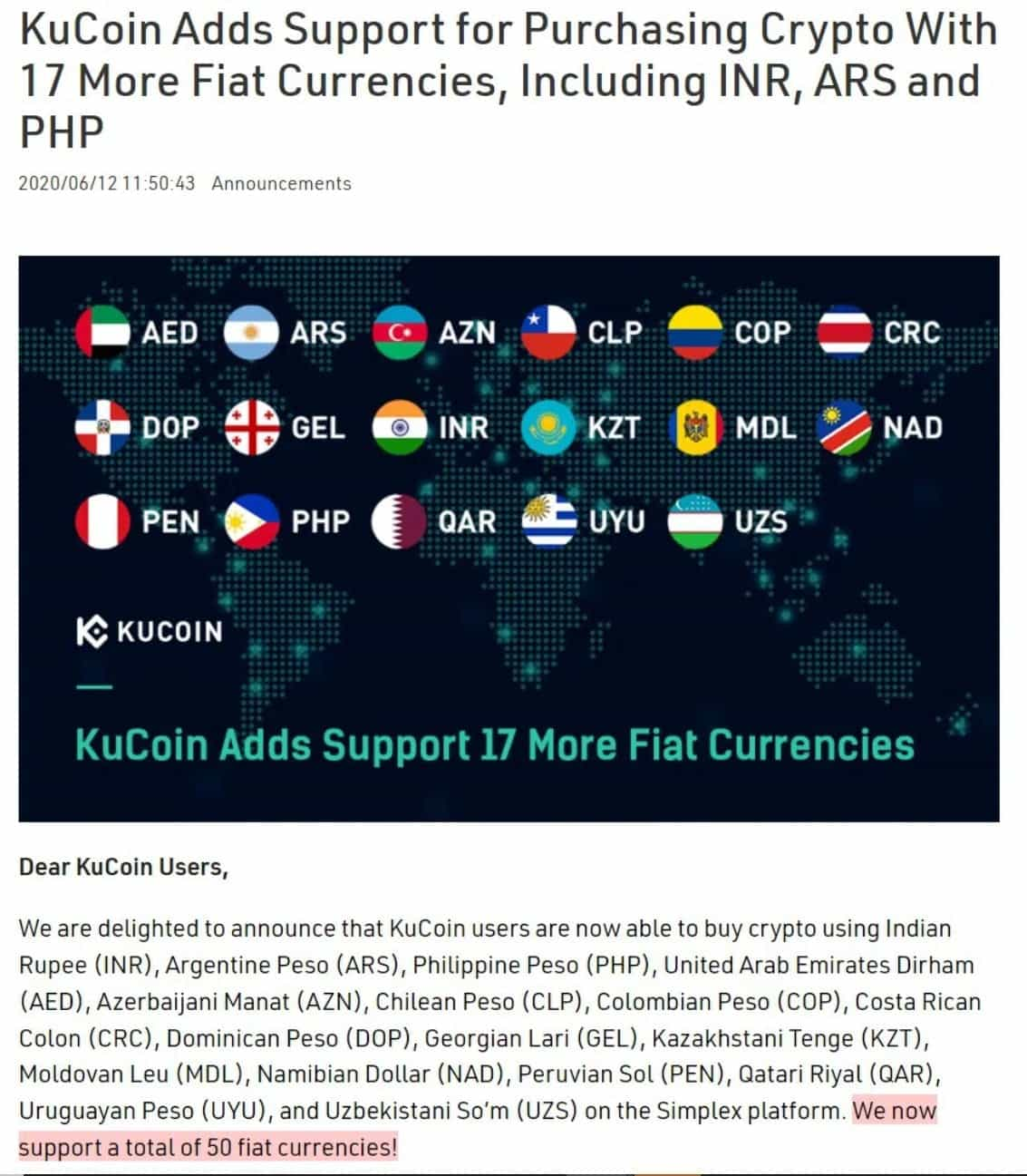
Products Offered
KuCoin Trading Bots
Trading bots are one of the big drivers contributing to users opting for KuCoin over competitors. KuCoin bots are trading tools that users can use to help them save time and energy while potentially increasing profits. It is sort of like employing a trading assistant who can trade round the clock for you.
Trading bots can help reduce repetitive work and reduce traders' need to stare at screens all day. These bots can do things like rebalancing a trading portfolio, follow DCA strategies, and execute trades based on pre-set parameters.
Before you get too excited and think that these bots will churn money out for you 24/7 while you sleep, it isn't quite that simple. While we all dream of having robot slaves to do things like our dishes, laundry and make profitable trades as we kick back and play video games, I am afraid there is more to it than that.
Trading bots are tools best deployed and utilized by professional traders who already understand how to trade and have developed profitable strategies. As a result, traders will often use bots more like an assistant and not a replacement. Check out KuCoin's article on trading bots to learn more about how those work.
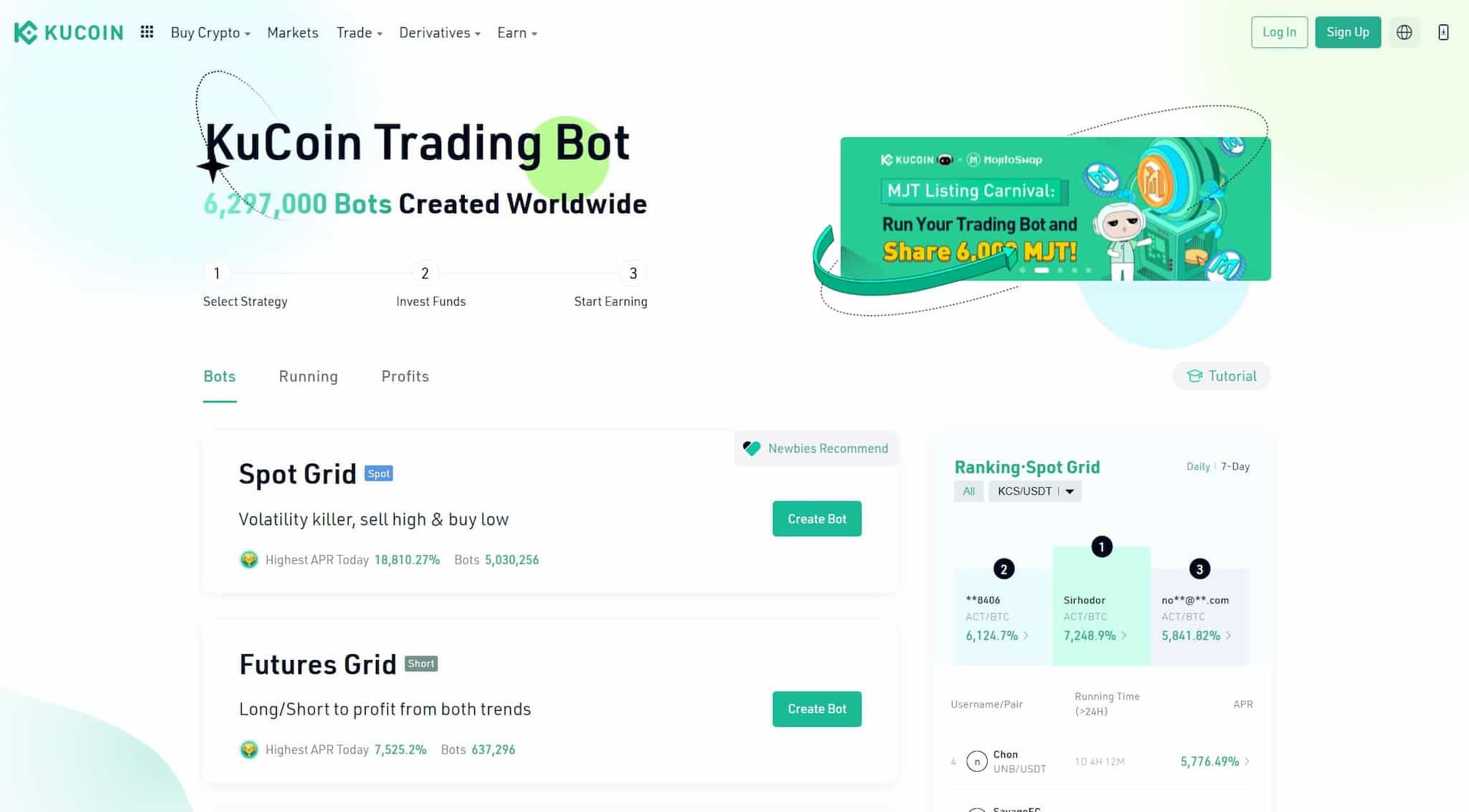
KuCoin Futures
Traders can trade several margined contracts for popular crypto-assets with leverage as high as 100x on the KuCoin Futures platform. The platform offers a Lite version for beginner futures traders and those who don't need as many features. There's also a Pro version that comes fully equipped with all the functions traders need and additional insights into markets with a powerful trading and analysis interface.
KuCoin Futures Lite interface:
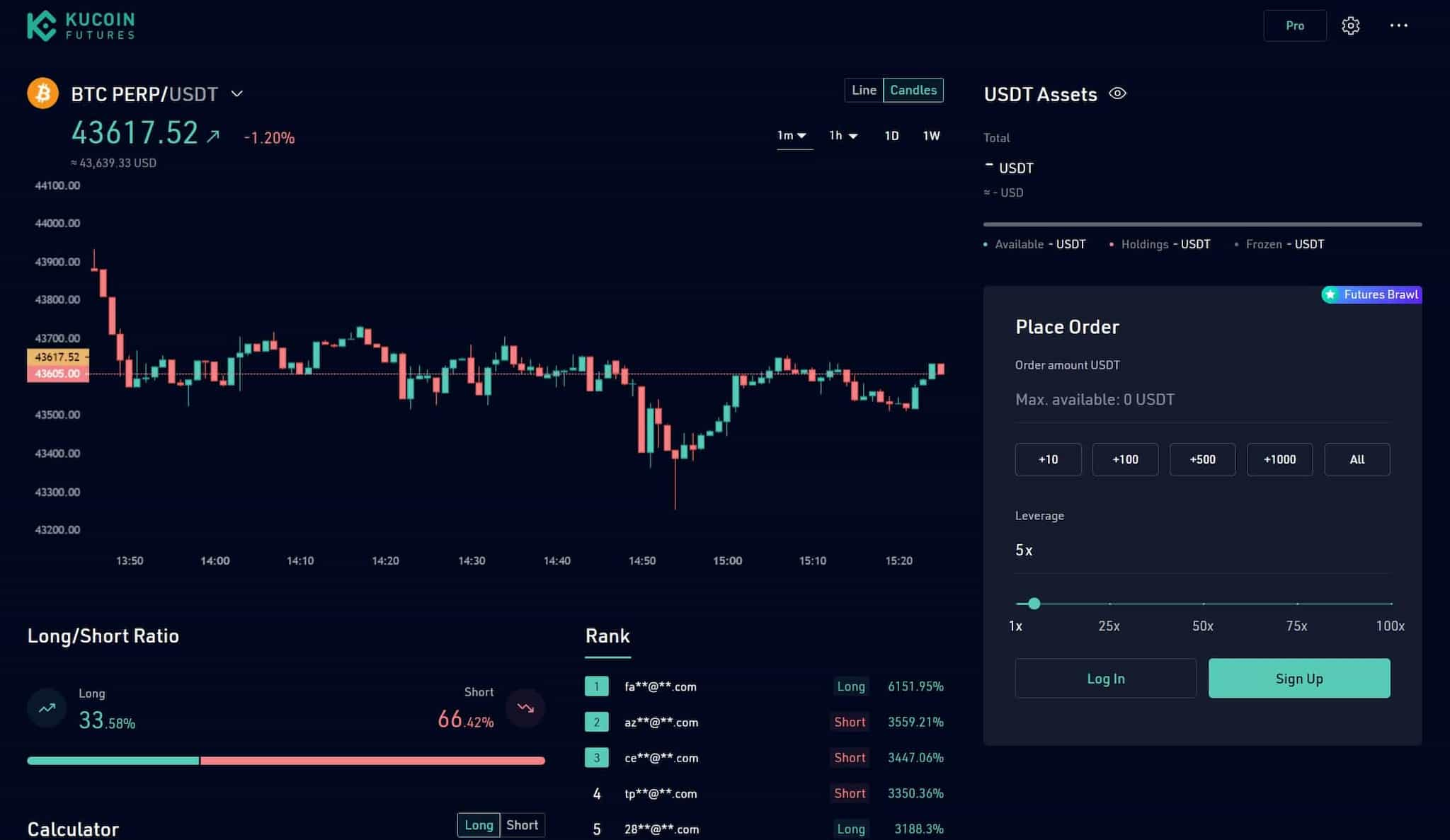
KuCoin Futures Pro interface:
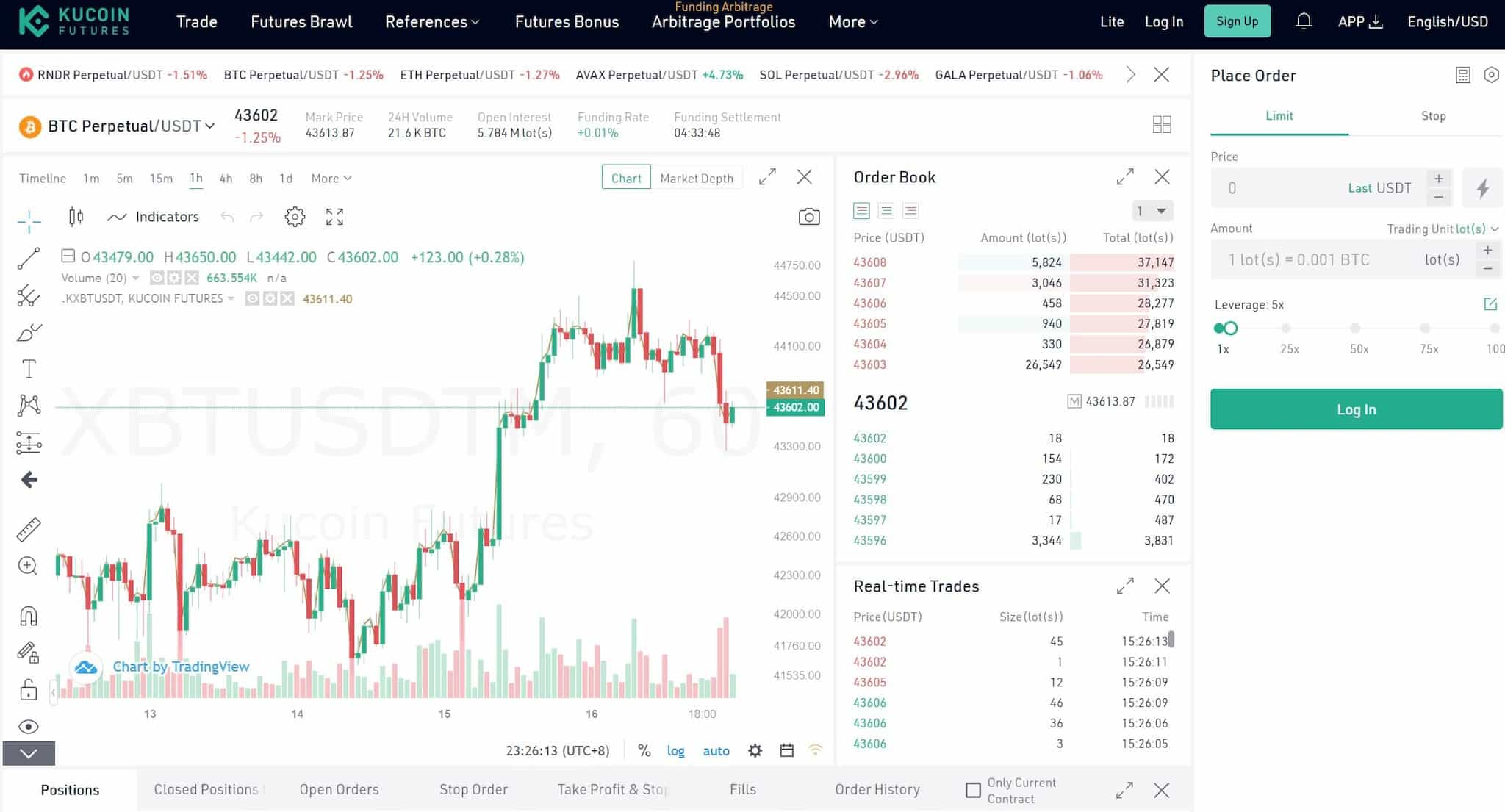
Futures Brawl
Futures Brawl is a fun and popular feature of the KuCoin platform. It started off as a promotional event in 2020 and remained on the platform due to its popularity. In Brawl, users can bet on whether they think Bitcoin price will increase or decrease and place a bet once per day. In addition, there are prizes that can be won for guessing correctly enough times, such as iPhones, Airpods and even a full Bitcoin.
Playing Futures Brawl is as simple as:
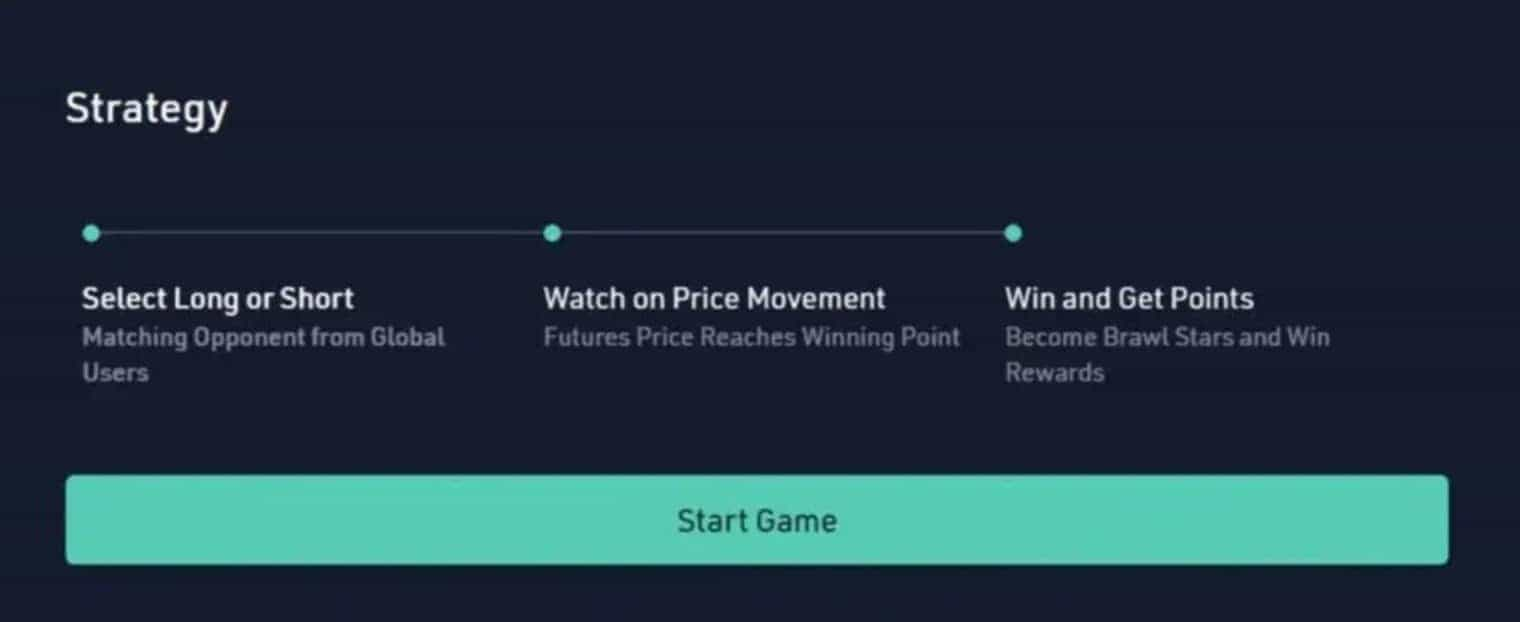
KuCoin Earn
Similar to Binance Earn, users love earning passive income on their crypto holdings. KuCoin provides a great platform to take advantage of this. Users can lend their crypto to other traders, stake their tokens, get involved in KuCoin Pools, earn daily KCS bonuses and play KuCoin win. There are many different ways for users to put their crypto to work, be sure to check out KuCoin’s earn section to learn more.
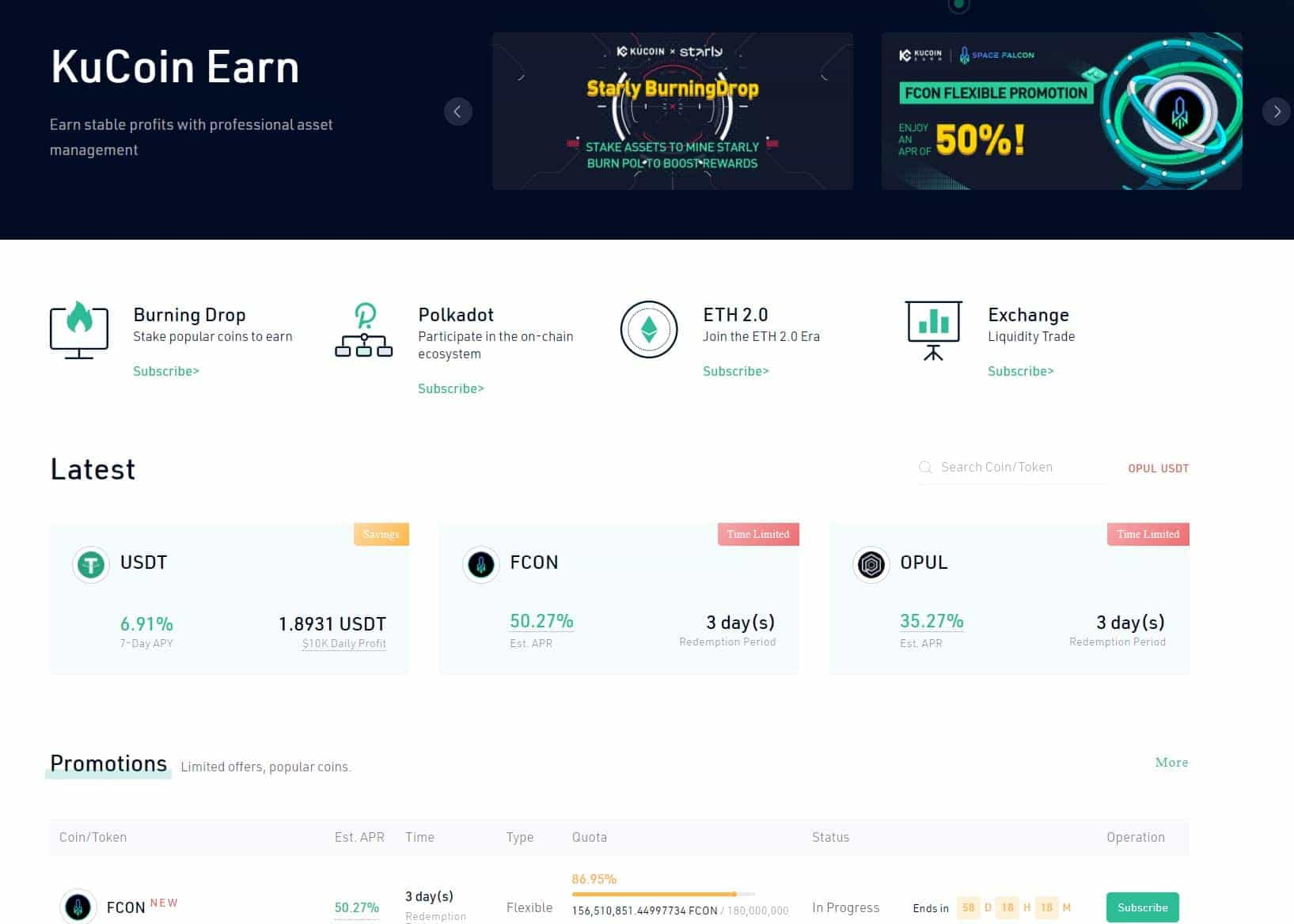
While I hope you will find this overview useful, if KuCoin strikes your fancy, you may also want to check out our in-depth KuCoin review.
If you are interested in jumping aboard the KuCoin train, Guy happens to have a full KuCoin tutorial to help you hit the ground with a running start.
Binance vs KuCoin: Closing Thoughts
At the start of this article, KuCoin was introduced as the challenger to the reigning supreme champion Binance. These two exchanges actually have more similarities than they do differences. It is a close comparison with the “which is best” decision coming down to user preference, what they are looking for and what they are familiar with.
KuCoin once held the number three spot as the largest exchange but has recently slipped down to 5th as they were surpassed in trading volume by the likes of Kraken and other competitors. I have used both Binance and KuCoin and have to say it is pretty clear (for my trading needs) why Binance is still the champ and has held strong to the number one spot for all these years.
👉 Sign up to Binance and get an exclusive additional 20% off trading fees for life, and up to a $600 bonus!
While KuCoin and Binance are very similar in terms of their earn and trading products and features, I feel where Binance really outshines is that they have a fiat off-ramp which is understandably an essential need for many crypto users. In addition, Binance’s NFT marketplace and debit card are also attracting many crypto users, and Binance can cater to the US market via Binance.US.
While debit cards and NFTs are great, many traders will still opt for KuCoin for the trading bots, massive altcoin support, and gamified-style trading entertainment. However, a considerable drawback is that KuCoin is not available to traders located in the US.
👉 Sign up to KuCoin for a 60% discount and access to a free trading bot!
Either of these is a fantastic choice. They are both as safe as an exchange can be and are highly reputable with a long-standing track record and millions of satisfied customers worldwide. I hope this article helped clarify some critical differences between the two and helped you along your crypto trading journey. Until next time crypto friends, happy hodl-ing.
Frequently Asked Questions
Both Binance and KuCoin support the major top cryptocurrencies, such as Bitcoin, Litecoin, Polkadot, Cardano, Dogecoin etc. However, KuCoin supports more coins than Binance and is often the first to list new altcoins.
Both Binance and KuCoin are industry leaders in offering rock-bottom fees, however, Binance has a very slight edge, especially when it comes to paying fees in the native BNB token and when trading higher volumes.
Both Binance and KuCoin have strong security protocols in place to protect user funds and meet industry best practices. However, Binance has a better track record when it comes to security incidents and appears to take higher security precautions when compared to KuCoin.
Binance's SAFU fund also provides peace of mind that in the event of a security breach, users' funds will be reimbursed.
This one is tough as both Binance and KuCoin are professional-grade platforms capable of meeting the needs of the most advanced and sophisticated traders. However, the edge goes to Binance as they have a more robust learn and FAQ section, along with the Binance Academy, which helps those new to crypto learn the ropes.
If you are looking for the most beginner-friendly exchange, I would recommend Coinbase, Kraken, or SwissBorg.
Disclaimer: These are the writer’s opinions and should not be considered investment advice. Readers should do their own research.


